Inbox and Environment News: Issue 460
August 2 - 8, 2020: Issue 460
Time Of Wiritjiribin - Tugarah Gunya'marri (Cold And Windy) August
The lyrebirds' calls ring out through the bushland as he builds his dancing mounds to attract his potential mates. It is the time of the flowering of the Marrai'uo (Acacia floribunda) which is a sign that the fish are running in the rivers. At the end of this time the Boo'kerrikin (Acacia decurrens) flower, which indicates the end of the cold, windy weather, and the beginning of the gentle spring rains.
False Sarsaparilla (Hardenbergia Violacea)
This Hardenbergia violacea, photographed in Warriewood by Joe Mills, is a species of Australian flowering Native plant, known in Australia by the common names false sarsaparilla, purple coral pea, happy wanderer, native lilac and waraburra which comes from the Kattang language; Worimi, or Gadjang, also spelt Kattang, Kutthung, Gadhang, Gadang, Gathang.This beautiful plant grows as a climbing vine, but also as a subshrub. Flowering in late Winter and all through Spring it makes a great fence cover which should be pruned after flowering.
There are two other species in Australia; a pale pink form called Hardenbergia ‘Rosea’ and a pure white form as well called Hardenbergia ‘Alba’.
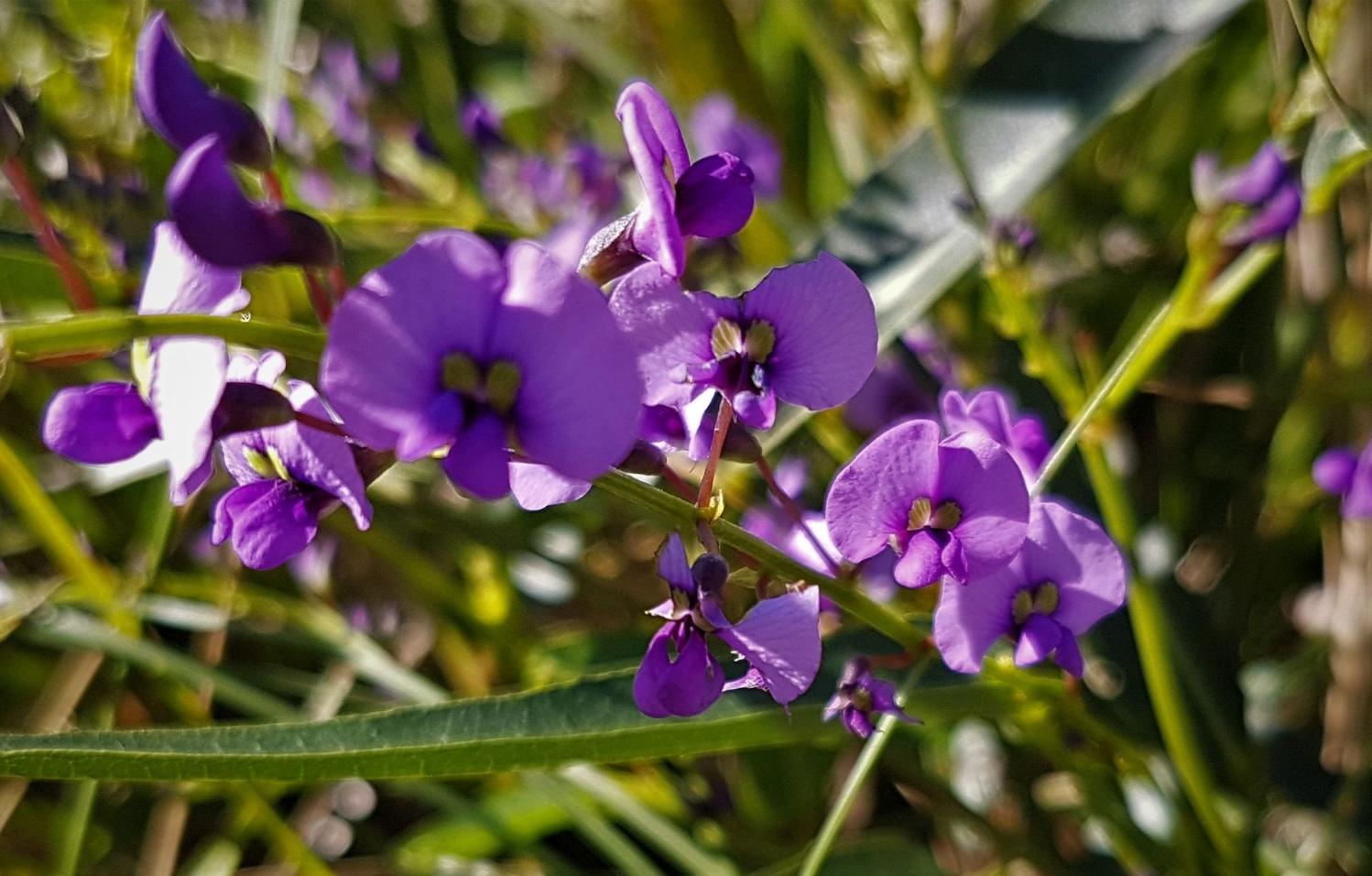
Pumice Washed Up On Our Beaches This Week + Turimetta Beach Erosion + Puffer Fish Washed Ashore - The World Where You Live!
The storms that began on Sunday, last weekend, have brought what is called 'pumice' onto our beaches by Wednesday.
Pumice is igneous rock with a foamy appearance. The name is derived from the Latin word "pumex" which means "foam". Throughout history pumice has been given many names because its formation was unclear. In former times it was called "Spuma Maris", meaning froth of the sea in Latin, because it was a frothy material thought to be hardened sea foam. It was also known as "écume de mer" in French and “Meerschaum” in German for the same reason. Around 80 B.C., it was called "lapis spongiae" in Latin for its vesicular properties. Many Greek scholars decided there were different sources of pumice, one of which was in the sea coral category.
Pumice, called pumicite in its powdered or dust form, is a volcanic rock that consists of highly vesicular rough textured volcanic glass, which may or may not contain crystals. It is typically light colored.
Pumice is created when super-heated, highly pressurised rock is violently ejected from a volcano. The unusual foamy configuration of pumice happens because of simultaneous rapid cooling and rapid depressurisation. The depressurisation creates bubbles by lowering the solubility of gases (including water and CO2) that are dissolved in the lava, causing the gases to rapidly exsolve (like the bubbles of CO2 that appear when a carbonated drink is opened). The simultaneous cooling and depressurisation freezes the bubbles in a matrix. Eruptions under water are rapidly cooled and the large volume of pumice created can be a shipping hazard for cargo ships. The pores of pumice and pumicite can have sizes from a wide range.
Pumice has been used in the medicinal industry for more than 2000 years. Ancient Chinese medicine used ground pumice along with ground mica and fossilised bones added to teas to calm the spirit. This tea was used to treat dizziness, nausea, insomnia, and anxiety disorders. Ingestion of these pulverised rocks were actually able to soften nodules and was later used with other herbal ingredients to treat gallbladder cancer and urinary difficulties. In western medicine, beginning in the early 18th century, pumice was ground into a sugar consistency and with other ingredients was used to treat ulcers mostly on the skin and cornea. Concoctions such as these were also used to help wounds scar in a healthier manner. In approximately 1680 it was noted by an English naturalist that pumice powder was used to promote sneezing.
Pumice has been used as a material in personal care for thousands of years. It is an abrasive material that can be used in powdered form or as a stone to remove unwanted hair or skin. In ancient Egypt skincare and beauty were very important to all classes and makeup and moisturisers were widely used. One common trend was to remove all hair on the body using creams, razors and pumice stones. Pumice in powdered form was used to whiten teeth in ancient Rome. Nail care was very important in ancient China; nails were kept groomed with pumice stones and to remove calluses. It was discovered in a Roman poem that pumice was used to remove dead skin as far back as 100 BC and likely before then. It has been used throughout many eras since then, including the Victorian Era.
Today, many of these techniques are still used; pumice is widely used as a skin exfoliant. Hair removal techniques have evolved over the centuries, however abrasive material like pumice stones are still used. "Pumice stones" are often used in beauty salons during the pedicure process to remove dry and excess skin from the bottom of the foot as well as calluses. Finely ground pumice has been added to some toothpastes as a polish, similar to Roman use, and easily removes dental plaque build up. Such toothpaste is too abrasive for daily use. Pumice is also added to heavy-duty hand cleaners (such as lava soap) as a mild abrasive. Old beauty techniques using pumice are still employed today but newer substitutes are easier to obtain.
One of the Pittwater Online regular contributors, Joe Mills, sent in some photos of beach erosion at Turimetta Beach and a Puffer fish this week too - they run below so you can see how these big waves bring so much debris on to our shores and also take big sections of same back out to sea - which they will eventually return to those same beaches.
Pufferfish are scaleless fish and usually have rough to spiky skin. All have four teeth that are fused together into a beak-like form. Diet. The diet of the pufferfish includes mostly invertebrates and algae. Large specimens will even crack open and eat clams, mussels, and shellfish with their hard beaks.
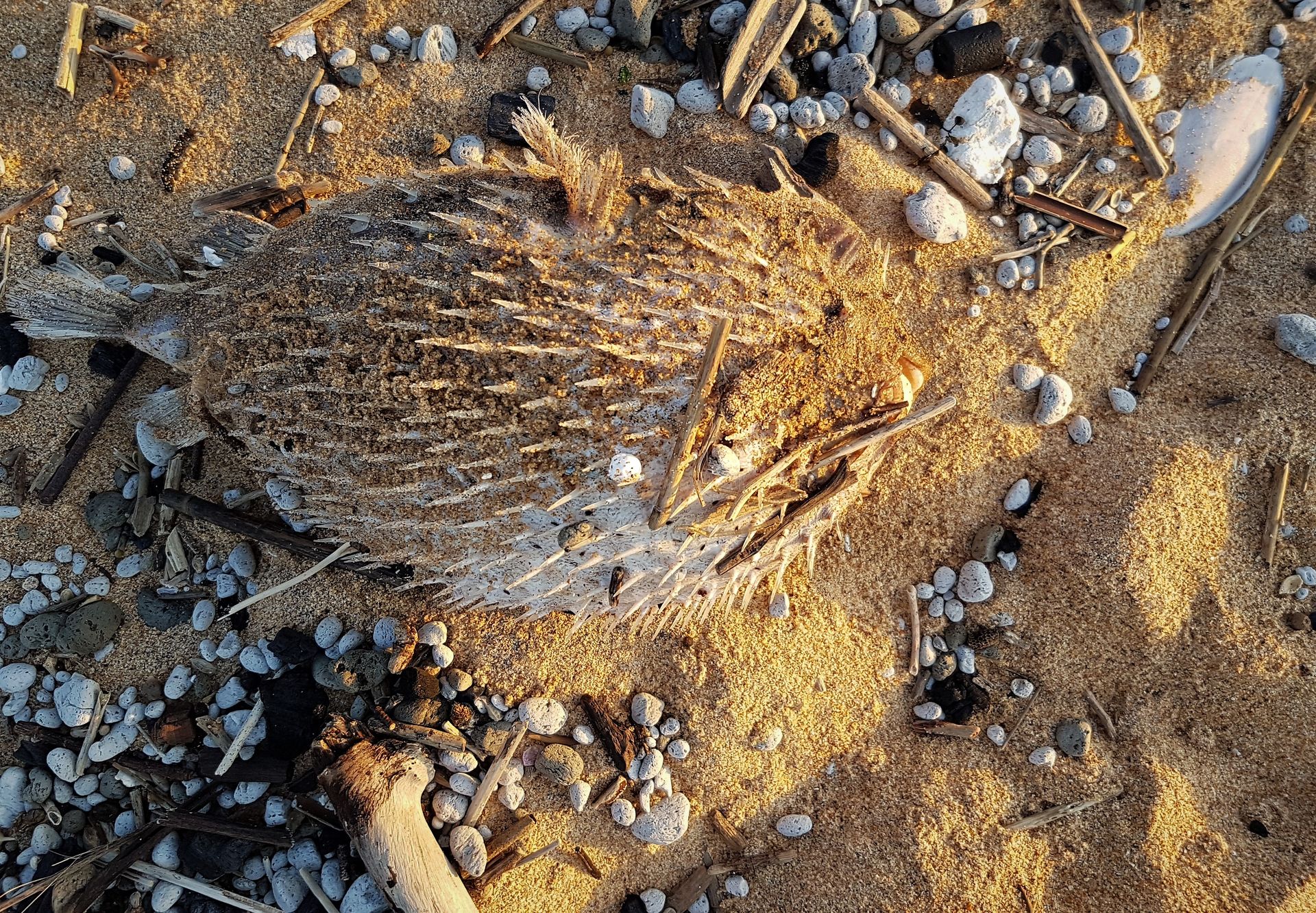
Pufferfish washed ashore at Narrabeen - photo by Joe Mills
Information from Wikipedia - pumice photo by A J Guesdon, 2020 - taken at Avalon Beach, south end near the pool.
Turimetta Beach erosion and Pufferfish photos by Joe Mills.
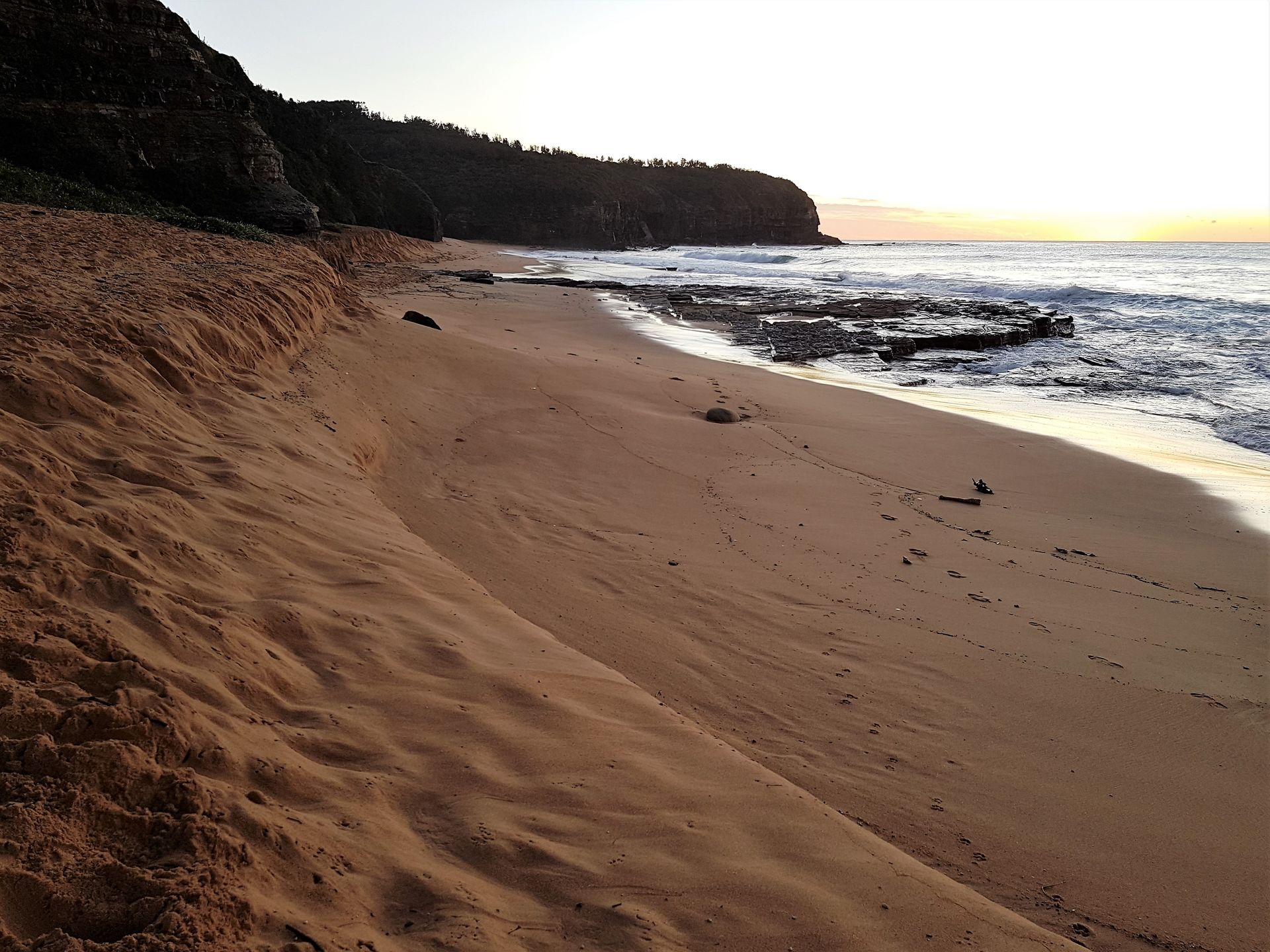
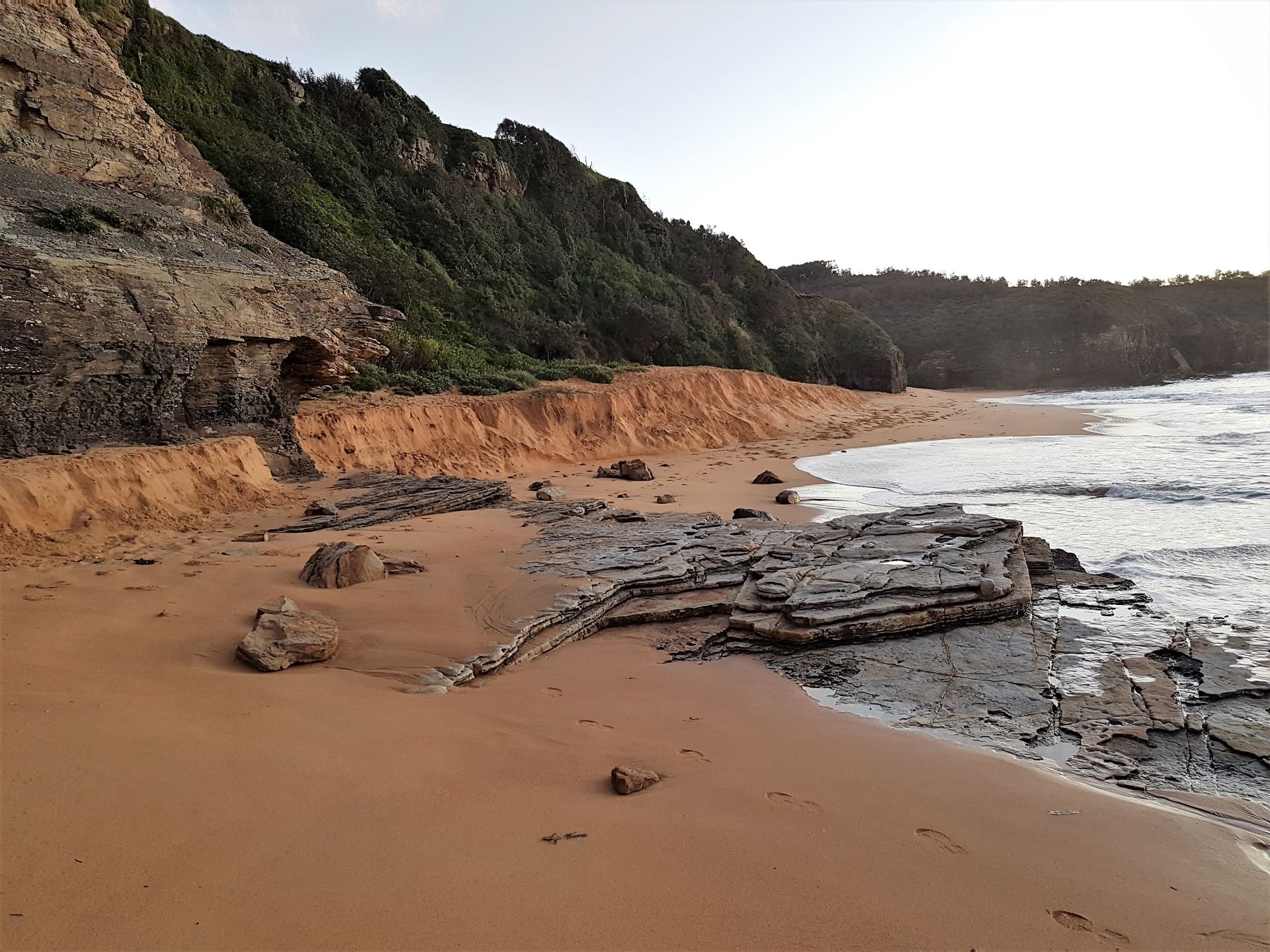
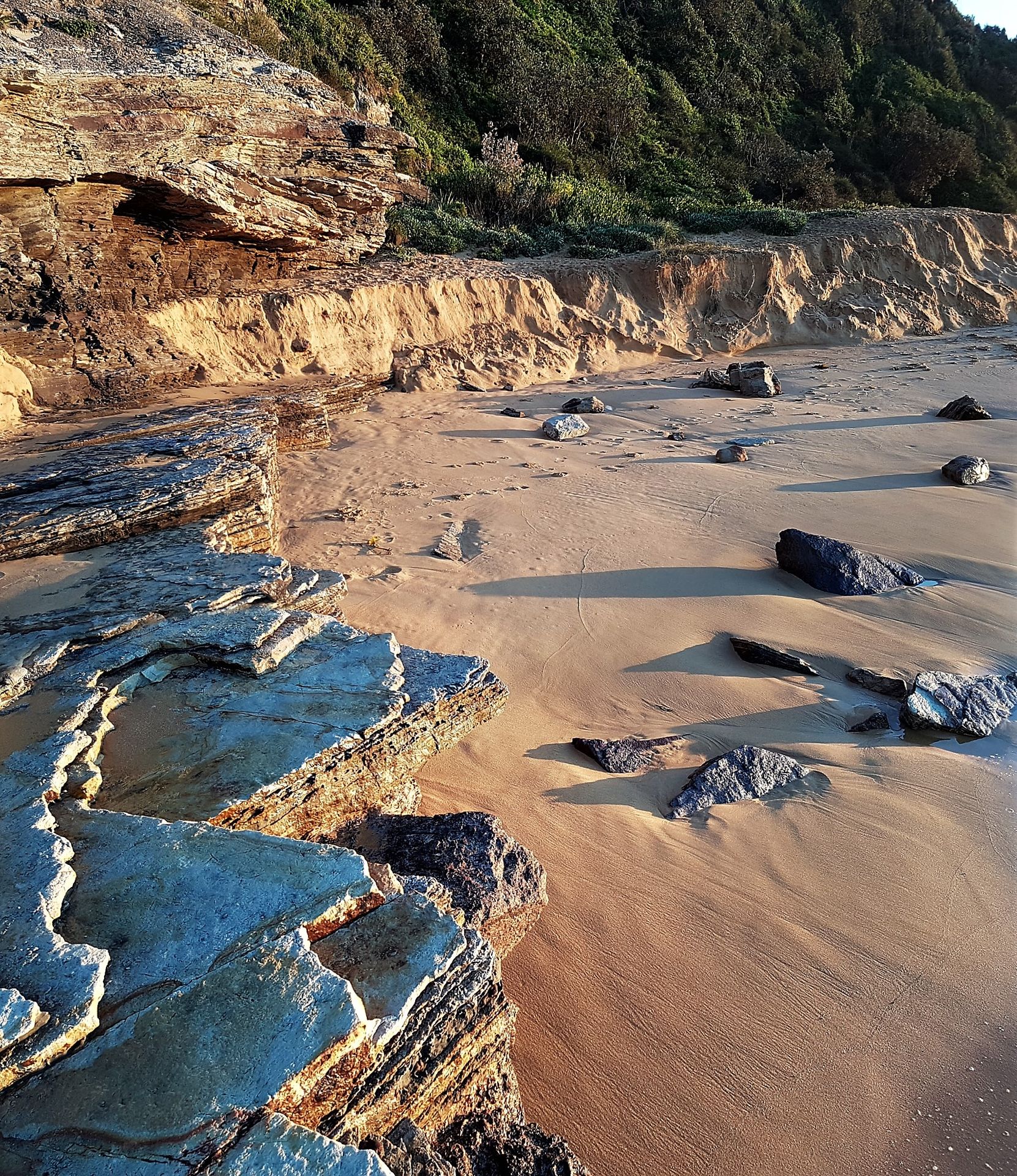
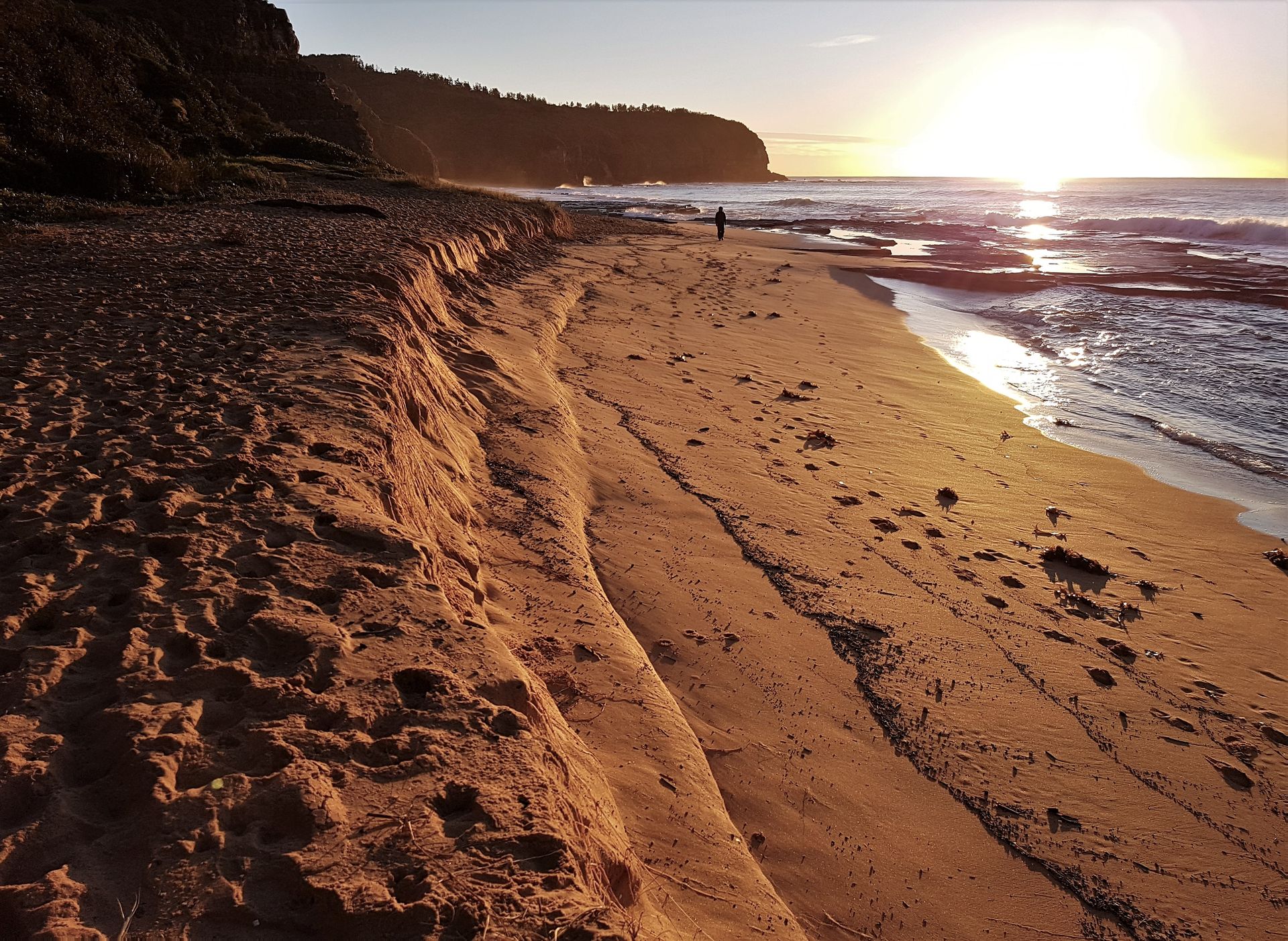
Please Help Sydney Wildlife Rescue: Donate Your Cans And Bottles And Nominate SW As Recipient
You can Help Sydney Wildlife help Wildlife. Sydney Wildlife Rescue is now listed as a charity partner on the return and earn machines in these locations:
- Pittwater RSL Mona Vale
- Northern Beaches Indoor Sports Centre NBISC Warriewood
- Woolworths Balgowlah
- Belrose Super centre
- Coles Manly Vale
- Westfield Warringah Mall
- Strathfield Council Carpark
- Paddy's Markets Flemington Homebush West
- Woolworths Homebush West
- Bondi Campbell pde behind Beach Pavilion
- Westfield Bondi Junction car park level 2 eastern end Woolworths side under ramp
- UNSW Kensington
- Enviro Pak McEvoy street Alexandria.
Every bottle, can, or eligible container that is returned could be 10c donated to Sydney Wildlife.
Every item returned will make a difference by removing these items from landfill and raising funds for our 100% volunteer wildlife carers. All funds raised go to support wildlife.
It is easy to DONATE, just feed the items into the machine select DONATE and choose Sydney Wildlife Rescue. The SW initiative runs until August 23rd.
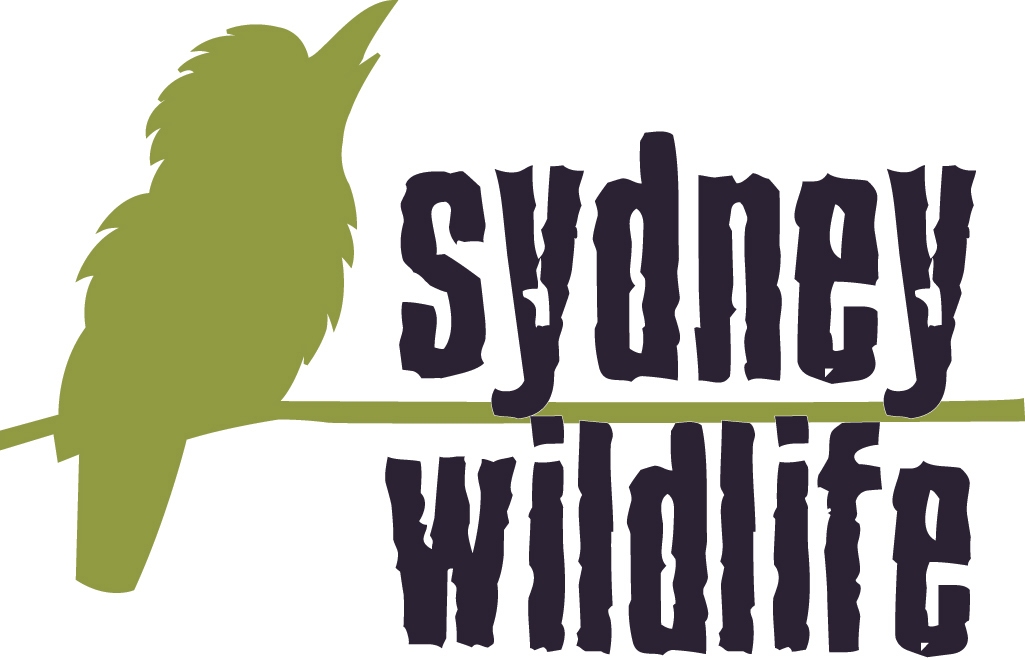
Bushcare In Pittwater
Where we work Which day What time
Avalon
Angophora Reserve 3rd Sunday 8:30 - 11:30am
Avalon Dunes 1st Sunday 8:30 - 11:30am
Avalon Golf Course 2nd Wednesday 3 - 5:30pm
Careel Creek 4th Saturday 8:30 - 11:30am
Toongari Reserve 3rd Saturday 9 - 12noon (8 - 11am in summer)
Bangalley Headland 2nd Sunday 9 to 12noon
Bayview
Winnererremy Bay 4th Sunday 9 to 12noon
Bilgola
North Bilgola Beach 3rd Monday 9 - 12noon
Algona Reserve 1st Saturday 9 - 12noon
Plateau Park 1st Friday 8:30 - 11:30am
Church Point
Browns Bay Reserve 1st Tuesday 9 - 12noon
McCarrs Creek Reserve Contact Bushcare Officer To be confirmed
Clareville
Old Wharf Reserve 3rd Saturday 8 - 11am
Elanora
Kundibah Reserve 4th Sunday 8:30 - 11:30am
 Mona Vale
Mona Vale Mona Vale Beach Basin 1st Saturday 8 - 11am
Mona Vale Dunes 2nd Saturday +3rd Thursday 8:30 - 11:30am
Newport
Bungan Beach 4th Sunday 9 - 12noon
Crescent Reserve 3rd Sunday 9 - 12noon
North Newport Beach 4th Saturday 8:30 - 11:30am
Porter Reserve 2nd Saturday 8 - 11am
North Narrabeen
Irrawong Reserve 2nd Saturday 2 - 5pm
Palm Beach
North Palm Beach Dunes 3rd Saturday 9 - 12noon
Scotland Island
Catherine Park 2nd Sunday 10 - 12:30pm
Elizabeth Park 1st Saturday 9 - 12noon
Pathilda Reserve 3rd Saturday 9 - 12noon
Warriewood
Warriewood Wetlands 1st Sunday 8:30 - 11:30am
Whale Beach
Norma Park 1st Friday 9 - 12noon
Western Foreshores
Coopers Point, Elvina Bay 2nd Sunday 10 - 1pm
Rocky Point, Elvina Bay 1st Monday 9 - 12noon
Gardens And Environment Groups And Organisations In Pittwater
Tick Population Booming In Our Area
Residents from Terrey Hills and Belrose to Narrabeen and Palm Beach report a high number of ticks are still present in the landscape. Local Veterinarians are stating there has not been the usual break from ticks so far and each day they’re still getting cases, especially in treating family dogs.
To help protect yourself and your family, you should:
- Use a chemical repellent with DEET, permethrin or picaridin.
- Wear light-colored protective clothing.
- Tuck pant legs into socks.
- Avoid tick-infested areas.
- Check yourself, your children, and your pets daily for ticks and carefully remove any ticks using a freezing agent.
- If you have a reaction, contact your GP for advice.
Murray-Darling Basin Water Markets In Need Of Major Changes
July 30, 2020
Water markets in the Murray-Darling Basin need major changes to allow for open, fair and efficient water trading that benefits water users, communities and the economy, the ACCC has found.
The ACCC’s interim report for its Murray-Darling Basin Water Markets Inquiry, released today, finds that the $1.5 billion-a-year basin water markets have outgrown the frameworks that govern them, and that change is needed for a market of this scale to operate efficiently and for the benefit of industries that depend on it.
The report sets out the ACCC’s preliminary views on the Basin’s water markets, including the issues it has identified and potential options for addressing them.
“Water trading has brought substantial benefits to water users across the Murray-Darling Basin, including by allowing irrigators to manage the amount of water they use, to earn income by selling excess water or their water rights, and to release capital to invest in their businesses,” ACCC Deputy Chair Mick Keogh said.
“However, these markets have significant problems. In basic terms, there is overly fragmented or complex regulation in some areas, not enough regulation in others, and a concerning lack of regulatory oversight and robust enforcement in important areas.”
“This has led to a lack of trust in the markets among many water users and has undoubtedly reduced the benefits generated by those markets.”
“These problems exacerbate distrust when water is scarce or when demand is increasing. They make a difficult situation worse,” Mr Keogh said.
The ACCC has identified problems in several key areas, particularly with the current governance arrangements for the Basin’s water markets.
A significant issue is that a range of different bodies oversee water markets in the Basin under different legal frameworks. Roles and responsibilities overlap in some areas, while leaving significant gaps in others.
“The Basin’s water markets, and the bodies that oversee and interact with them, operate in a complex, fragmented and inconsistent system,” Mr Keogh said.
“To make real and lasting improvements, we need to rethink how these water markets are governed.”
Integrity of markets must be improved
The ACCC says the integrity of water markets also needs improving, with insufficient regulatory oversight of some market participants, including brokers and investors.
Water brokers, exchange platforms and other intermediaries have no industry-specific regulation, meaning brokers’ roles are often unclear and their interests can diverge from those of their clients.
There are very few rules to prevent market manipulation or similar conduct, and no regulator charged with monitoring trading behaviour in water markets.
Potential responses include a licensing scheme operated at the Federal or Basin State level for brokers and other intermediaries, or extending the financial regulation framework to all water products.
Appointing a single regulator to oversee trade in Basin markets, similar to arrangements in place in the financial services or energy markets, could also help address these issues, the ACCC says.
Lack of transparency is compounding problems
A lack of transparency in the markets is also an issue for water users.
Different record keeping by different states and trade processes mean participants cannot get a full, timely or accurate picture of water trading, and the same information is not available to all water market participants, the ACCC has observed.
Information crucial to the business decision-making of irrigators and traders, such as allocation policies and river operations policy, is not always well communicated or easy for users to access.
The ACCC says market transparency could be boosted through practical measures such as the use of standardised identifiers across the Basin, like ABNs.
Trade rules may not reflect physical constraints
Increased trade and the resulting changing patterns of water delivery and use are creating new challenges for the management of the river system, its infrastructure, and the environment.
The rules and operational frameworks that manage the trade and delivery of water may not always reflect the physical realities of the river system, particularly in the Southern Basin.
The ACCC says delivery risk, conveyance loss and storage limitations need to be properly reflected in trade rules, and where limitations exist, mechanisms are needed to efficiently manage these.
“It is clear that the Basin’s markets need decisive and comprehensive reform,” Mr Keogh said.
“There are many problems, but we do not believe that dismantling existing water markets is the answer. This would mean farmers, communities and the Australian economy would miss out on the substantial benefits these markets provide.”
“The Murray-Darling Basin’s water is a precious and often scarce resource. Water trading has the potential to ensure this resource is used to its greatest benefit, particularly for irrigators, but this can only happen if markets are efficient and fair and are underpinned by an environmentally healthy river system,” Mr Keogh said.
The full interim report, including a list of options for feedback, is available at Murray-Darling Basin water markets inquiry.
Background
On 8 August 2019, the Federal Government directed the ACCC to undertake a public inquiry into the Murray-Darling Basin water markets.
The ACCC was asked to recommend options to enhance markets for tradeable water rights, including options to enhance their operations, transparency, regulation, competitiveness and efficiency.
As part of the inquiry, the ACCC released an issues paper in October 2019 and held 10 public forums to hear directly from stakeholders across the Basin.
The final report will be provided to the Government by 30 November 2020.
How to make a submission: closes August 28
You can make a submission in response to the interim report via the ACCC consultation hub at: Murray-Darling Basin water markets inquiry - Interim report.
Alternatively, you can ask a question about the inquiry or make a submission via email at: waterinquiry@accc.gov.au.
Submissions can also be made via post to:
Director
Murray-Darling Basin Inquiry
Australian Competition and Consumer Commission
GPO Box 3131
Canberra ACT 2601
All non-confidential written submissions will be made available on the ACCC’s website.
Broadly speaking, the Inquiry is a public process and written feedback will be posted on the ACCC website.
The ACCC can accept a claim of confidentiality from the party if the disclosure of information would damage their competitive position.
Do The Crime, Pay The Fine – Illegal Fishers Sentenced
July 28, 2020
Illegal fishers are being reminded crime doesn’t pay, with four men facing court and forced to pay significant fines in a number of separate illegal fishing incidents along the NSW coast, NSW Department of Primary Industries (NSWDPI), Acting Director Fisheries Compliance, Dr Andrew Moriarty, said today.
In the first matter, a man from Sydney faced Port Kembla Local court, where he plead guilty to charges of possessing prohibited size fish, and possess more than the possession limit after he was apprehended by NSWDPI Fisheries officers at Maloneys Bay at Bass Point near Shell Cove.
“Fisheries officers observed the man diving in June last year, and observed him for some time where they saw him pass a bag of Abalone to another person waiting on the rock platform,” Dr Moriarty said.
“The man and the other person were intercepted, where the bag was found to contain 20 Abalone, all of which were below the minimum size of 11.7cm.
“Recreational fishers diving for Abalone must adhere to a daily bag and possession limit of 2.
“Abalone is a priority species and an important resource to NSW, and the courts take offences involving Abalone very seriously.
“The man appeared in Wollongong Local Court for sentencing and was fined $3000 for each offence. He was also ordered to pay $1750 in professional costs.”
In another matter, two men, aged 40 and 23 from Broadwater have been sentenced before the Ballina Local Court following a late night patrol of recreational fishers in ocean waters South of Ballina, found they were in joint possession of a commercial quantity of snapper and teraglin, many of which were undersized. The 40 year old was also found in possession of a Wobbegong shark, which is a prohibited species when found in possession for recreational fishers in NSW.
Both men plead guilty and were fined $2800 and $2300 respectively.
“Illegal fishing does not pay – those who continue to do the crime will continue to be brought before the courts to pay for their crimes,” Dr Moriarty said.
Report illegal fishing via the Fishers Watch phone line on 1800 043 536 or online at: https://www.dpi.nsw.gov.au/fishing/compliance/report-illegal-activity
Saltwater recreational bag and size limits for NSW can be found at: https://www.dpi.nsw.gov.au/fishing/recreational/fishing-rules-and-regs/saltwater-bag-and-size-limits
EPA Fines BlueScope Steel For Exceeding Air Quality Limit
July 27, 2020
The NSW Environment Protection Authority (EPA) has fined BlueScope Steel Limited $30,000 for allegedly failing to comply with dioxin air emission limits on six occasions in March and April 2020.
BlueScope Steel recorded the limit exceedances between 26 March and 28 April during major maintenance activities at the Sinter Plant Waste Gas Cleaning Plant.
EPA Director Regulatory Operations Metropolitan Giselle Howard says strict limits are outlined in the licence to regulate air emissions for this potentially harmful substance. These licence limits reflect a measure of international best practice for controls of dioxins.
As part of a response to the exceedances, BlueScope Steel completed air emissions modelling and engaged an independent consultant to undertake a health assessment of the elevated emissions.
“High levels of dioxins can be extremely harmful to human health, on this occasion air emissions modelling and a health assessment have shown that community impacts were unlikely from the emissions.”
“The local community has an expectation that every effort must be made to ensure that licensees will comply with their licence requirements and have best practice controls in place to protect people and the environment.”
In addition to being fined, BlueScope Steel will also be directed to complete several new Pollution Reduction Programs requiring a feasibility assessment of real time air emissions monitoring, updated air emissions modelling, and improved air emissions monitoring at the Sinter Plant during any future similar maintenance events.
BlueScope Steel is also undertaking additional investigations to understand the root cause of the elevated dioxin emissions.
Penalty notices are one of several tools the EPA can use to achieve environmental compliance, including formal warnings, official cautions, licence conditions, notices and directions and prosecutions.
For more information about the EPA’s regulatory tools, see the EPA compliance policy on the EPA website
Northern Tableland's Endangered Wallabies Bounding Back After Bushfire
July 27, 2020
Endangered Brush-tailed Rock-wallabies and their young have been spotted bounding through the bush in Oxley Wild Rivers and Guy Fawkes River National Parks, delighting NSW National Parks and Wildlife Service (NPWS) staff surveying the impact of the bushfires.
Piers Thomas, Senior Conservation Planning Officer with NPWS, said an aerial survey of 48 known colonies in Oxley Wild Rivers National Park found the iconic animal in more than 80% of the locations.
"All of the colonies surveyed had areas of burnt habitat, yet we spotted 90 surviving individuals," said Mr Thomas.
"This figure is consistent with counts taken in previous years so it is very reassuring.
"It's great to see that these endangered animals have not only survived the fires but are adapting to the changed landscape.
"Most of the colonies with surviving wallabies received emergency supplementary feeding of lucerne, sweet potato and carrots and they are most definitely bouncing back," said Mr Thomas.
Further ground-based surveys done after the fires also identified individual wallabies that were known to researchers from before the fire, including one that has been spotted over the last 11 years.
The surveys, conducted in June 2020, also revealed some young at foot that would have been in the pouch when the fire hit, and some new pouch young that may have been born since the event.
For the first time the aerial survey extended into nearby Guy Fawkes River National Park in the upper reaches of the Aberfoyle River.
"In more good news for the species we discovered an additional 25 Brush-tailed Rock-wallaby colonies in this park and saw surviving individuals in 12 of the previously-known sites," Mr Thomas said.
The 2019–20 fires burnt more than 80% of known Brush-tailed Rock-wallaby habitat in NSW.
Post-fire assessments carried out by NPWS and the NSW Government's Saving our Species program showed that local wallabies had been left stranded with limited food and water and the supplementary feeding was vital to help maintain these colonies and allow them to recover.
NPWS, Saving our Species and partners delivered more than 3 tonnes of supplementary feeding to reserves in the northern tablelands. In total, close to 12 tonnes of supplementary food has been delivered to Brush-tailed rock-wallabies across New South Wales.
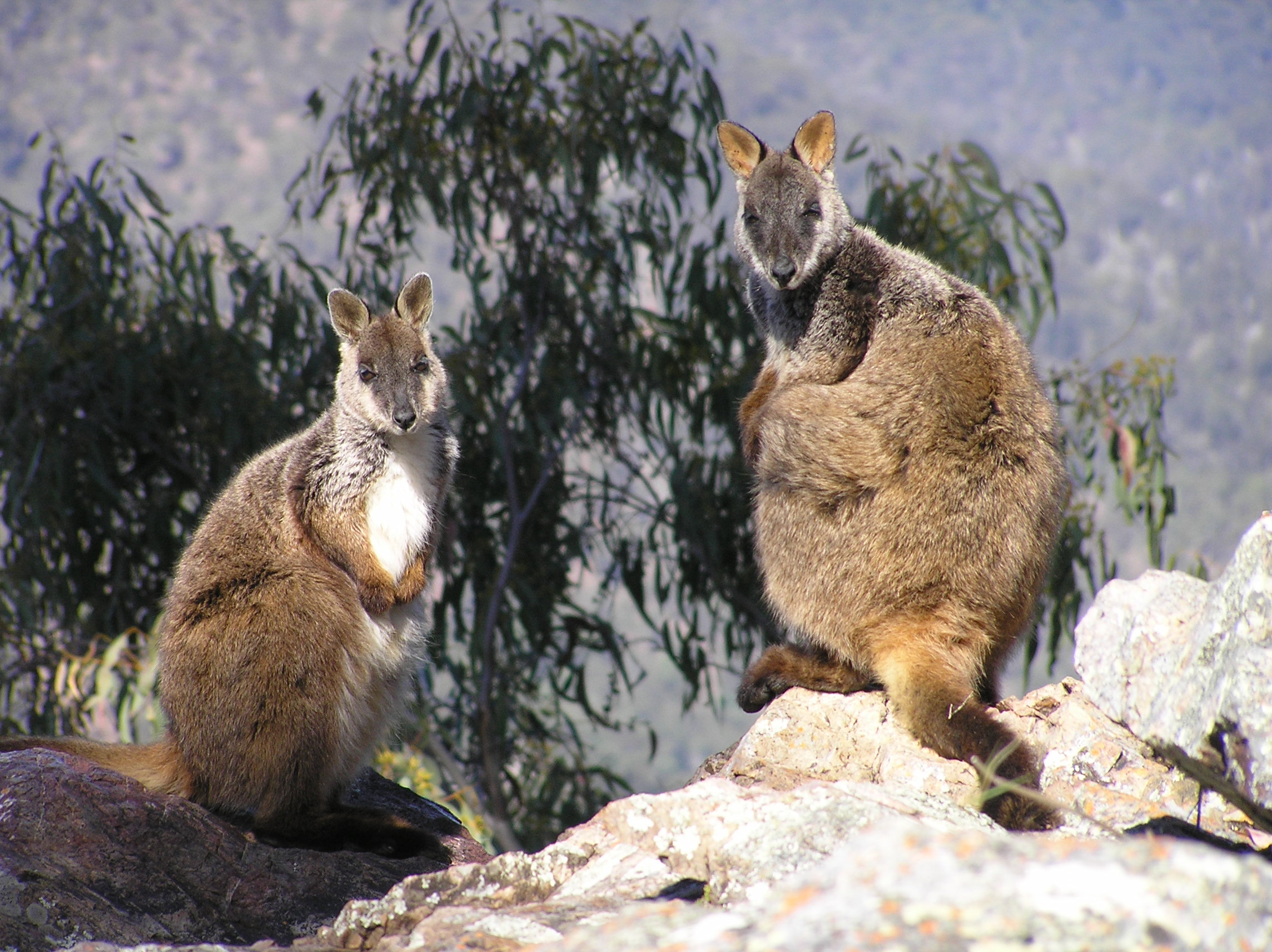
Mount Kaputar’s Famous Pink Slugs Need Your Help! Send Us Your Slug Snapshots
July 28, 2020
They may be bright pink, but Mount Kaputar’s famous giant pink slugs sometimes give us the slip, so the National Parks and Wildlife Service is urging visitors to send in your slug snapshots on a new app.
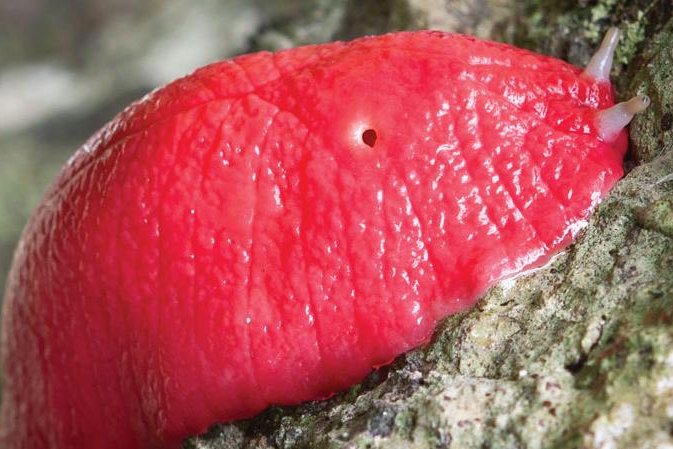
Giant pink slug Triboniophorus aff. graeffei Dawsons Spring Nature Trail Mt Kaputar National Park. Photo: Robert Cleary/DPIE
National Parks and Wildlife Service (NPWS) Senior Project Officer Adam Fawcett said visitors to Mount Kaputar National Park can share in the slug search.
“The slugs are part of the Mount Kaputar Land Snail and Slug Threatened Ecological Community (TEC), a group of 20 snail and one slug species that exist nowhere else in the world.
“While the pink slugs have become the pin-ups of this TEC, the snails are also fascinating, with some being only as big as a pin head.
“Recently we conducted a search to see how the slugs and snails were faring after the summer bushfires.
“While we recorded good numbers of our snail species and could see evidence of recent slug activity with their distinctive feeding trails, the slugs did give our surveyors the slip.
“That’s why other tools like the Slug Sleuth App can be really helpful in helping us ensure the slug’s survival.
“By snapping shots of the slugs on the app, it’s hoped we can track the health and status of the ecological community across Mount Kaputar National Park.
“The information collected will help improve our knowledge of where the threatened ecological community occurs, its recovery post-fire, preferred habitat and assist with ongoing conservation efforts.
“The app was developed as part of the NSW Government’s Saving our Species program and is free to download for both iOS and Android devices. Use the search term 'Slug Sleuth' or 'Kaputar' to find the app in your preferred app store,” Mr Fawcett said.
The Saving our Species program is the NSW Government's commitment to securing the future of the State's threatened plants and animals. To find out more, or to get involved with Saving our Species visit Help save our threatened species.
New WWF Report: 3 Billion Animals Impacted By Australia’s Bushfire Crisis
July 28, 2020
Nearly three billion animals – mammals, reptiles, birds, and frogs – were killed or displaced by Australia’s devastating 2019-20 bushfires.
It’s almost three times an earlier estimate released in January.
The breakdown is 143 million mammals, 2.46 billion reptiles, 180 million birds, and 51 million frogs.
Those figures are revealed in an interim report entitled Australia’s 2019-2020 Bushfires: The Wildlife Toll, commissioned by the World Wide Fund for Nature and believed to be world first research.
Ten scientists from the University of Sydney, University of New South Wales, University of Newcastle, Charles Sturt University, and BirdLife Australia contributed the majority of the work.
The project is being led by Dr Lily Van Eeden and overseen by Professor Chris Dickman, both from the University of Sydney.
While results are still being finalised, the headline figure of nearly three billion animals impacted is unlikely to change.
“The interim findings are shocking. It’s hard to think of another event anywhere in the world in living memory that has killed or displaced that many animals. This ranks as one of the worst wildlife disasters in modern history,” said WWF-Australia CEO Dermot O’Gorman.
“When you think about nearly three billion native animals being in the path of the fires it is absolutely huge, it’s a difficult number to comprehend,” said Professor Dickman.
While the scientists cannot say how many animals died, Professor Dickman said the prospects for animals which escaped the flames were “probably not that great” because of a lack of food and shelter or being forced into habitat already occupied.
In January, Professor Dickman, working with WWF scientists, produced an early estimate that 1.25 billion animals were impacted. However, that calculation focused only on the states of New South Wales and Victoria.
Dr Van Eeden said for this project the team examined a fire impact area of 11.46 million hectares.
“We believe a continent-wide assessment of the number of animals that might be impacted has never been done in Australia before or anywhere else in the world. Other nations can build upon this research to improve understanding of bushfire impacts everywhere,” Dr Van Eeden said.
Mr O’Gorman said with extreme fires becoming more frequent because of climate change the interim findings “give other countries a window into the future of mega fires and their devastating impact on wildlife”.
He said the research had also been released in time to be considered by the review of Australia’s flagship environment law – the Environment Protection and Biodiversity Conservation (EPBC) Act.
“Following such a heavy toll on Australia’s wildlife, strengthening this law has never been more important. WWF will continue to advocate for policies that benefit both people and nature, restore what has been lost, and ensure we build back a more resilient Australia,” Mr O’Gorman said.
Professor Dickman said the research shows people that mega fires are changing the environment and depleting native biodiversity and change is necessary.
“How quickly can we decarbonise? How quickly can we stop our manic land clearing? We land clear at a rate that’s one of the highest in the world,” Professor Dickman said.
The recommendations in the interim report call for addressing knowledge gaps on wildlife densities and responses to fire, improving habitat connectivity to help mobile species escape fire, identifying and protecting unburnt habitat crucial to threatened species, improving fire prevention and management, and establishing rapid response teams to help species impacted by fire.
It's anticipated that the final report will be completed by the end of August 2020.
To End King Coal's Reign; Must His Most Loyal Subjects Get Paid?
July 28, 2020
The huge task of phasing out coal requires a detailed roadmap to sequence coal plant retirement with a range of policy instruments and support for key stakeholders which will expand current notions of a just transition, leading energy experts have said.
Governments should be prepared to pay billions of pounds to operators of coal-fired power plants in agreements to shut down their plants early, a new paper published in Nature Climate Change today recommends.
The paper recommends extensive compensation should also be considered for regional economies hardest hit by the loss of coal producers and energy-intensive industries that will have to absorb higher energy prices in order to ensure a just transition to greener energy production.
To prevent regions such as the coal belt in the United States or dependent communities in Germany and Poland being abandoned after coal, the study recommends governments should foot the bill for extensive improvements to localised transport and communication infrastructure, higher education provision, new business opportunities and the relocation of government services.
And to shield the poor from electricity price rises resulting from replacing coal plants with more costly alternative power generation, governments and regulators should consider Just Transition measures including adjusting electricity tariffs, investing in community benefit funds or subsidising energy efficiency through weatherization and retrofits programmes targeted at the most in need or vulnerable.
Benjamin K Sovacool, Professor of Energy Policy in the Science Policy Research Unit (SPRU) at the University of Sussex Business School, said: "Paying billions to some of the world's biggest polluters to avert a climate catastrophe they helped to create may sound unpalatable to some environmentalists.
"But compensating the biggest losers from coal phase-out, alongside improving equity and accountability processes, will go a long way towards achieving all the other aspects of a just energy transition including legitimacy, desirability, speed of transition and financing.
"Simply put: a just transition requires more than just safeguarding jobs, and involves protecting the resilience of entire communities across both high-carbon as well as low-carbon energy pathways."
In the new paper published today, 13 energy experts led by Michael Jakob and Jan Christoph Steckel from the Mercator Research Institute on Global Commons and Climate Change (MCC) in Berlin outline that while the power sector must stop using coal without carbon capture-and-storage within 30 years, coal combustion currently accounts for 40% of global CO2 emissions from energy and coal use with growing demand in China, India and other Asian countries.
To quicken the rate of coal phase-out to meet the Paris Agreement timelines, the study authors recommend governments remove all coal subsidies immediately to create a level playing field for clean energy sources.
Dr Steckel said: "In my view, the novel twist we give to the debate is that we need to think of "who's losing" beyond a "particular group," "get them paid," and we also propose how this could be financed via a tax on carbon."
And policymakers and legislators should also consider imposing additional carbon costs on coal plants to accelerate phase-out and raise funds in support of affected workers, communities and consumers, the academics recommend.
Dr Jakob, lead author of the study, said: "Coal phase-out can only succeed if it takes into account social objectives and priorities. It is crucial that the modalities of coal phase-out are seen as fair and that the process corresponds to political realities. Policymakers need to understand in more detail who will be affected by a transition away from coal, how these societal groups can be effectively compensated and how powerful vested interests can be counterbalanced."
Coal phase-out is also likely to affect the competitiveness of other industries such as steel, aluminium, chemicals, and other important components of industrial strategy, the study warns.
To counter the risk of carbon leakage through the migration of energy-intensive industries to regions with laxer climate measures, policymakers should consider a range of measures including carbon contracts for difference or mechanisms of technology transfer.
Co-author Professor Frank Jotzo, from the Australian National University's Crawford School of Public Policy and Director of the Centre for Climate Economics and Policy at ANU, said: "What is needed in the transition away from coal is a clear way forward for regional economies and communities, creating prospects for new jobs and business opportunities, while limiting adverse impacts on consumers and energy-intensive industries."
Michael Jakob, Jan Christoph Steckel, Frank Jotzo, Benjamin K. Sovacool, Laura Cornelsen, Rohit Chandra, Ottmar Edenhofer, Chris Holden, Andreas Löschel, Ted Nace, Nick Robins, Jens Suedekum, Johannes Urpelainen. The future of coal in a carbon-constrained climate. Nature Climate Change, 2020; DOI: 10.1038/s41558-020-0866-1
Australia’s First Indigenous Chair For Biodiversity And Environmental Science
July 21, 2020
Curtin University has appointed noted Australian ecologist Dr Stephen van Leeuwen as Australia’s first Indigenous Chair for Biodiversity and Environmental Science.
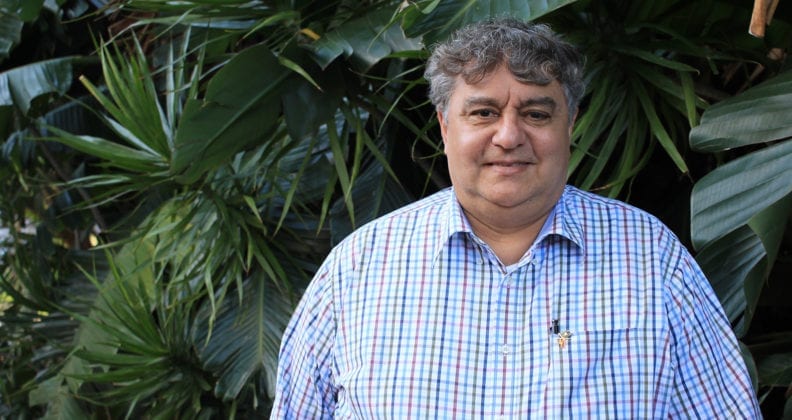
Dr Stephen van Leeuwen
The Biodiversity Chair will be the first of its type in Australia and one of only a few globally that directly engage with First Nations Peoples. A key focus of the position will be building a Western-Indigenous science interface, so that landscapes for threatened species can be managed in new ways that are sympathetic to the maintained stewardship provided, over the last 65,000 years, by the Aboriginal people.
Curtin Vice-Chancellor Professor Deborah Terry said she is thrilled that a person of Professor van Leeuwen’s outstanding scientific and national profile has accepted the prestigious role.
“The appointment of Dr van Leeuwen is testament to his influential leadership in his field and will bring an Indigenous focus to the University in a way that will create healthy ecological and healthy cultural outcomes for Western Australia and the nation,” Professor Terry said.
“Professor van Leeuwen’s commitment to delivering innovative and enduring positive outcomes for biodiversity management through collaboration with both Traditional Owners and other land managers, made him an outstanding candidate for the role.
“We are also delighted that Dr van Leeuwen is returning to his university ‘home’, where he completed his PhD in 1997.”
The newly created role is part of the long-term partnership between Curtin University and BHP, which over the past decade has supported engineering and chemistry studies at the university including through funding for new facilities, and scholarships to help increase female, indigenous and regional student participation.
Dr van Leeuwen is a Noongar man with strong links to Country in the Busselton and Margaret River areas of south-west Western Australia.
He spent three decades as a senior scientist with the Western Australian Department of Biodiversity, Conservation and Attractions and is a leading botanical landscape ecologist.
As the inaugural Chair for Biodiversity and Environmental Science, Dr van Leeuwen’s key task will be to lead research programs promoting excellence and innovation in the fields of biodiversity and environmental science through collaborative networks within Indigenous communities, the broader academic community in Western Australia, Australia and internationally.
Blue Mountains National Park Plan Of Management Proposed Amendment: Public Consultation
The Proposed Amendment to the Blue Mountains National Park Plan of Management and Govetts Leap Draft Visitor Precinct Plan are available for public review and comment. View Blue Mountains National Park Proposed Amendment to Plan of Management - PDF, 978kb
Public exhibition of the proposed amendment and draft visitor precinct plan provides members of the community with an opportunity to have a say in planned improved accessibility works in Blue Mountains National Park. Comments close 17 August 2020.
What is a plan of management?
Parks and reserves established under the National Parks and Wildlife Act 1974 must have a plan of management. The plan includes information on important park values and provides directions for future management. The plan of management is a legal document, and after the plan is adopted all operations and activities in the park must be in line with the plan. From time to time plans of management are amended to support changes to park management or proposed works.
Why is the plan being amended now?
Blue Mountains National Park is the most visited park in New South Wales, receiving more than 8 million visits in 2018. Visitor infrastructure improvements will enhance and disperse the visitor experience and improve protection of the park's values. The improvements to Govetts Leap visitor precinct will elevate the quality of interpretation and promotion of the park's World Heritage values.
The amendment relates to visitor facility upgrades to support both increased and better-dispersed visitation and includes:
- upgraded and increased capacity parking areas at Govetts Leap
- upgraded facilities to allow improved access for people with disabilities and/or restricted mobility
- enable pre-existing overnight stay facilities at Green Gully visitor precinct including a camping area and cabins.
What opportunities will the community have to comment?
The proposed amendment and draft visitor precinct plan are on public exhibition until Monday 17 August 2020. Everyone is invited to review the amendment and draft visitor precinct plan and provide comments.
When will the amended plan of management and visitor precinct plan be finalised?
At the close of the public exhibition period, we consider all submissions on the plan amendment and prepare a submissions report. We provide the Blue Mountains Regional Advisory Committee and the National Parks and Wildlife Advisory Council with the proposed amendment, all the submissions and the submissions report. They consider the documents, make comments on the amendment or suggest changes, and the Council provides advice to the Minister for Energy and Environment.
The Minister considers the amendment, submissions and advice, makes any necessary changes and decides whether to adopt the amendment under the National Parks and Wildlife Act 1974. Once an amendment is adopted, it is published on the Department's website and key stakeholders, including those who made a submission on the draft plan, will be notified.
Submissions on the draft visitor precinct plan will be reviewed in conjunction with the Blue Mountains Regional Advisory Committee. The finalised Govetts Leap visitor precinct plan will be published on the Department's website.
How can I get more information about the proposed amendment?
For further information on the plan of management please contact the NPWS Park Management Planning Team at npws.parkplanning@environment.nsw.gov.au
Where can I see a printed copy of the proposed amendment?
Copies are available at the following locations:
- National Parks and Wildlife Service Heritage Centre, Blackheath – end of Govetts Leap Road
- Blue Mountains City Council, Katoomba – Ground floor foyer, 2-6 Civic Place
How can I comment on the proposed amendment and draft visitor precinct plan?
Public exhibition of the proposed amendment and draft visitor precinct plan is from Friday 26 June until Monday 17 August 2020. You are invited to comment on the amendment by sending a written submission during this time.
To help us make the best use of your feedback:
- Please tell us what issue or part of the plan you are talking about. One way you can do this is to include the section heading and/or page number from the amendment in your submission.
- Tell us how we can make the plan better. You may want to tell us what you know about the park or how you or other people use and value it.
We are happy to hear any ideas or comments and will consider them all, but please be aware that we can't always include all information or ideas in the final plan.
Your privacy
Your submission will be provided to two advisory bodies. Your comments on the draft plan may include 'personal information'. The Department complies with the NSW Privacy and Personal Information Protection Act 1998, which regulates the collection, storage, quality, use and disclosure of personal information. For details see our privacy page. Information that in some way identifies you may be gathered when you use our website or send us an email.
If you indicate in your written submission that you object to your submission being made public, we will ask you before releasing your submission in response to any access applications under the Government Information (Public Access) Act 2009.
Have your say
Public exhibition is from 26 June 2020 to 17 August 2020.
You can provide your written submission in any of the following ways:
Post your written submission to:
Manager Planning Evaluation and Assessment
Locked Bag 5022
Parramatta NSW 2124
Email your submission to: npws.parkplanning@environment.nsw.gov.au
Make a submission online by using the online form here
Doodle Comer Swamp Nature Reserve Draft Plan Of Management: Public Consultation
The Doodle Comer Swamp Nature Reserve Draft Plan of Management is available for review and comment.
Public exhibition of the draft plan provides an important opportunity for members of the community to have a say in the future management of Doodle Comer Swamp Nature Reserve. Comments close 28 September 2020.
This plan has been prepared using a new format and presented as 2 separate documents:
- The plan of management which is the 'legal' document that will be provided to the Minister for formal adoption. This is the document we are seeking your feedback on.
- The planning considerations document supports the plan of management. It includes detailed information on park values (e.g. threatened species and cultural heritage) and threats to these values. A summary of this information is in the plan of management.
Doodle Comer Swamp Nature Reserve encompasses about half of the Doodle Comer Swamp, an ephemeral wetland listed in the National Directory of Important Wetlands and the largest wetland of its type in southern NSW. The catchment for Doodle Comer Swamp is unregulated and the wetland has an unaltered water flow regime, now uncommon in New South Wales inland wetlands and of high conservation value.
When inundated, Doodle Comer Swamp attracts large numbers of waterbirds that use the swamp for breeding and foraging. When dry, the wetland provides habitat for the threatened bush stone-curlew, listed as endangered in New South Wales. Other threatened animals found include brolga and superb parrot. The reserve contains several threatened ecological communities such as Inland Grey Box Woodland and Sandhill Pine Woodland.
Doodle Comer Swamp is part of the Country of the Wiradjuri speaking nation and is part of a larger network of swamps and lagoons across the Riverina that formed a significant part of the cultural landscape, sustaining the Wiradjuri with an extensive range of resources for thousands of years. A diverse range of Aboriginal sites exist in the reserve and surrounding area and in 2016 Doodle Comer was declared an Aboriginal place recognising these values and the wetland's special significance to Aboriginal culture.
What is a plan of management?
Parks and reserves established under the National Parks and Wildlife Act 1974 need to have a plan of management. The plan includes information on important park values and provides directions for future management. The plan of management is a legal document, and after the plan is adopted all operations and activities in the park must be in line with the plan. From time to time plans of management are amended to support changes to park management. Visit: Doodle Comer Swamp Nature Reserve Draft Plan of Management - PDF, 2.3MB
The National Parks and Wildlife Act sets out the matters that need to be considered when preparing a plan of management. These matters are addressed in the supporting Doodle Comer Swamp Nature Reserve Draft Plan of Management: Planning considerations document.
Why is a plan being prepared now?
Since the park`s reservation in 2011, it has been managed according to a statement of management intent. After a park's reservation and before the release of its plan of management, a statement of management intent is prepared outlining the management principles and priorities for the park's management. This statement documents the key values, threats and management directions for the park. It is not a statutory document and a plan of management will still need to be prepared according to the National Parks and Wildlife Act 1974.
Publication of a draft or final plan will replace the statement of management intent for the relevant parks covered.
What opportunities will the community have to comment?
The draft plan of management is on public exhibition until 28 September 2020 and anyone can review the plan of management and provide comments.
When will the plan of management be finalised?
At the end of the public exhibition period in September 2020 we will review all submissions, prepare a submissions report and make any necessary changes to the draft plan of management. The Far West Regional Advisory Committee and the National Parks and Wildlife Advisory Council will then review the plan along with the submissions and report, as required by the National Parks and Wildlife Act.
Once their input has been considered and any further changes made to the plan of management, we provide the plan to the Minister for Energy and Environment. The plan of management is finalised when the Minister formally adopts the plan under the National Parks and Wildlife Act. Once a plan is adopted it is published on the Department website and a public notice is advertised in the NSW Government Gazette.
How can I get more information about the draft plan?
For further information on the plan of management please contact the Park Management Planning Team at npws.parkplanning@environment.nsw.gov.au.
How can I comment on the draft plan?
Public exhibition for the plan of management is from 26 June 2020 until 28 September 2020. You are invited to comment on the draft plan by sending a written submission during this time.
Have your say
Public exhibition is from 26 June 2020 to 28 September 2020.
You can provide your written submission in any of the following ways:
Post your written submission to:
Manager Planning Evaluation and Assessment
Locked Bag 5022
Parramatta NSW 2124
Email your submission to: npws.parkplanning@environment.nsw.gov.au
Make a submission online by using the online form here
Tollingo Nature Reserve And Woggoon Nature Reserve Draft Plan Of Management: Public Consultation
The Tollingo Nature Reserve and Woggoon Nature Reserve Draft Plan of Management is available for review and comment.
Public exhibition of the draft plan provides an important opportunity for members of the community to have a say in the future management of Tollingo Nature Reserve and Woggoon Nature Reserve. Comments close 28 September 2020.
This plan has been prepared using a new format which is presented as two separate documents:
- The plan of management which is the legal document that will be provided to the Minister for formal adoption. This is the document we are seeking your feedback on.
- The planning considerations document supports the plan of management. It includes detailed information on park values (e.g. threatened species and cultural heritage) and threats to these values. A summary of this information is provided in the plan of management.
Tollingo Nature Reserve and Woggoon Nature Reserve are significant as two of the largest remaining mallee remnants in New South Wales. The largely intact old-age mallee vegetation is rare in the Central West, which is mostly used for agriculture. The reserves provide habitat for the endangered malleefowl and other native animals.
Tollingo Nature Reserve is shared Country for the Ngiyampaa and Wiradjuri people, while Woggoon Nature Reserve is within Wiradjuri traditional Country.
What is a plan of management?
Parks and reserves established under the National Parks and Wildlife Act 1974 need to have a plan of management. The plan includes information on important park values and provides directions for future management. The plan of management is a legal document, and after the plan is adopted all operations and activities in the park must be in line with the plan. From time to time plans of management are amended to support changes to park management.
The National Parks and Wildlife Act sets out the matters that need to be considered when preparing a plan of management. These matters are addressed in the supporting Tollingo Nature Reserve and Woggoon Nature Reserve Draft Planning Considerations document. This document may be updated from time to time, for example, to include new information on the values of the park (e.g. new threatened species), new management approaches (e.g. a new pest management technique) or new park programs. Visit Tollingo Nature Reserve and Woggoon Nature Reserve Draft Plan of Management - PDF 2.3MB
Why is a plan being prepared now?
This plan of management will replace the statement of management intent which was approved in 2014. Statements of management intent are non-statutory documents which summarise the key values and management directions for a park.
Since reservation in 1988 and 1974 respectively, Tollingo and Woggoon nature reserves have been managed according to a statement of management intent. After a park's reservation and before the release of its plan of management, a statement of management intent is prepared outlining the management principles and priorities for the park's management. This statement documents the key values, threats and management directions for the park. It is not a statutory document and a plan of management will still need to be prepared according to the National Parks and Wildlife Act 1974. Publication of a draft or final plan will replace the statements of management intent for the relevant parks covered.
What opportunities will the community have to comment?
The draft plan of management and planning considerations are on public exhibition until 28 September 2020 and anyone can provide comments.
When will the plan of management be finalised?
At the end of the public exhibition period in September 2020, National Parks and Wildlife Service (NPWS) will review all submissions, prepare a submissions report and make any necessary changes to the draft plan of management. The West Regional Advisory Committee and the National Parks and Wildlife Advisory Council will then review the plan along with the submissions and report, as required by the National Parks and Wildlife Act.
Once their input has been considered and any further changes made to the plan of management, we provide the plan to the Minister for Energy and Environment. The plan of management is finalised when the Minister adopts the plan under the National Parks and Wildlife Act. Once a plan is adopted it is published on the Department's website.
How can I get more information about the draft plan?
For further information on the plan of management please contact the NPWS Park Management Planning Team at npws.parkplanning@environment.nsw.gov.au
Where can I see a printed copy of the draft plan?
Hard copies are available for viewing at the following locations:
- National Parks and Wildlife Service (NPWS) office, Camp Street, Forbes
- Condobolin Library, 130 Bathurst Street, Condobolin
How can I comment on the draft plan?
Public exhibition for the plan of management is from 26 June until 28 September 2020. You are invited to comment on the draft plan by sending a written submission during this time.
Your privacy
Your submission will be provided to a number of statutory advisory bodies (including the relevant regional advisory committee and the National Parks and Wildlife Advisory Council). Your comments on the draft plan may include 'personal information'. the Department complies with the NSW Privacy and Personal Information Protection Act 1998 which regulates the collection, storage, access, amendment, use and disclosure of personal information. See our privacy webpage for details. Information that in some way identifies you may be gathered when you use our website or send us correspondence.
If an application to access information under the Government Information (Public Access) Act 2009 requests access to your submission, your views about release will be sought if you have indicated that you object to your submission being made public.
While all submissions count, they are most effective when we understand your ideas and the outcomes you want for park management. Some suggestions to help you write your submission are:
- Write clearly and be specific about the issues that are of concern to you.
- Note which part or section of the plan your comments relate to.
- Give reasoning in support of your points – this makes it easier for us to consider your ideas and will help avoid misinterpretation.
- Tell us specifically what you agree/disagree with and why you agree/disagree.
- Suggest solutions or alternatives to managing the issue if you can.
Have your say
Public exhibition is from 26 June 2020 to 28 September 2020.
You can provide your written submission in any of the following ways:
Post your written submission to:
Manager Planning Evaluation and Assessment
Locked Bag 5022
Parramatta NSW 2124
Email your submission to: npws.parkplanning@environment.nsw.gov.au
Make a submission online by using the online form here
Limeburners Creek National Park, Goolawah National Park And Goolawah Regional Park: Public Consultation
Planning for the future –NSW National Parks and Wildlife Service is preparing a new plan of management for Limeburners Creek National Park, Goolawah National Park and Goolawah Regional Park.
These parks are in the traditional Country of the Dunghutti and Birpai Aboriginal Peoples. The parks play a fundamental role in the lives of local Aboriginal people, helping to maintain a tangible link to the past and enabling continued connections to Country.
The existing plan of management for Limeburners Creek National Park was written in 1998. The areas that are now Goolawah National Park and Goolawah Regional Park were formerly Goolawah State Park and Crown land. Initial community consultation about the Goolawah parks was undertaken in 2012, soon after they were transferred to National Parks and Wildlife Service.
Since this time large new areas have been added to the parks, including the intertidal zone on some of the beaches. There has also been a steady increase in visitors, and new recreational uses have become popular. Information about the values of the park has improved and new approaches to managing fire, pests and weeds have been developed.
Accommodating all of these visitors, maintaining the unique visitor experience and protecting the environment is challenging. Good planning is essential to manage increasing demand and provide sustainable visitor facilities and opportunities while minimising impacts and retaining the natural and low key nature of this beautiful stretch of coast. The development of a new combined plan of management will help to protect the parks' unique values and improve the effectiveness of how we manage the parks.
What opportunities will the community have to contribute to the development of a new plan of management?
Previous consultation, including a community forum, identified a range of issues important to the local community which will be considered in the new plan. It is now time to reach out and reconnect with our neighbours, stakeholders and local communities, as well as extending the invitation to the wider community of park users.
There are now 2 opportunities to be involved in the development of the plan of management for Goolawah Regional Park and Goolawah and Limeburners Creek national parks:
- During the development of the draft plan - register your interest below to receive updates and be notified of further consultation dates. Complete the form to provide your ideas on what you believe are the most important values of the parks and how they should be managed in the future. Your input will be used to draft a plan that reflects community values and aspirations.
- During public exhibition of the draft plan - there will be another opportunity to have your say when the draft plan of management is completed and put on public exhibition for 90 days. Anyone can submit comments on the draft plan during this time.
Register your interest
Complete the online form here to register your interest, provide initial input and be notified of further consultation dates. Tell us what is important to you about the parks and what you would like to see in the future. Comments close 30 October 2020.
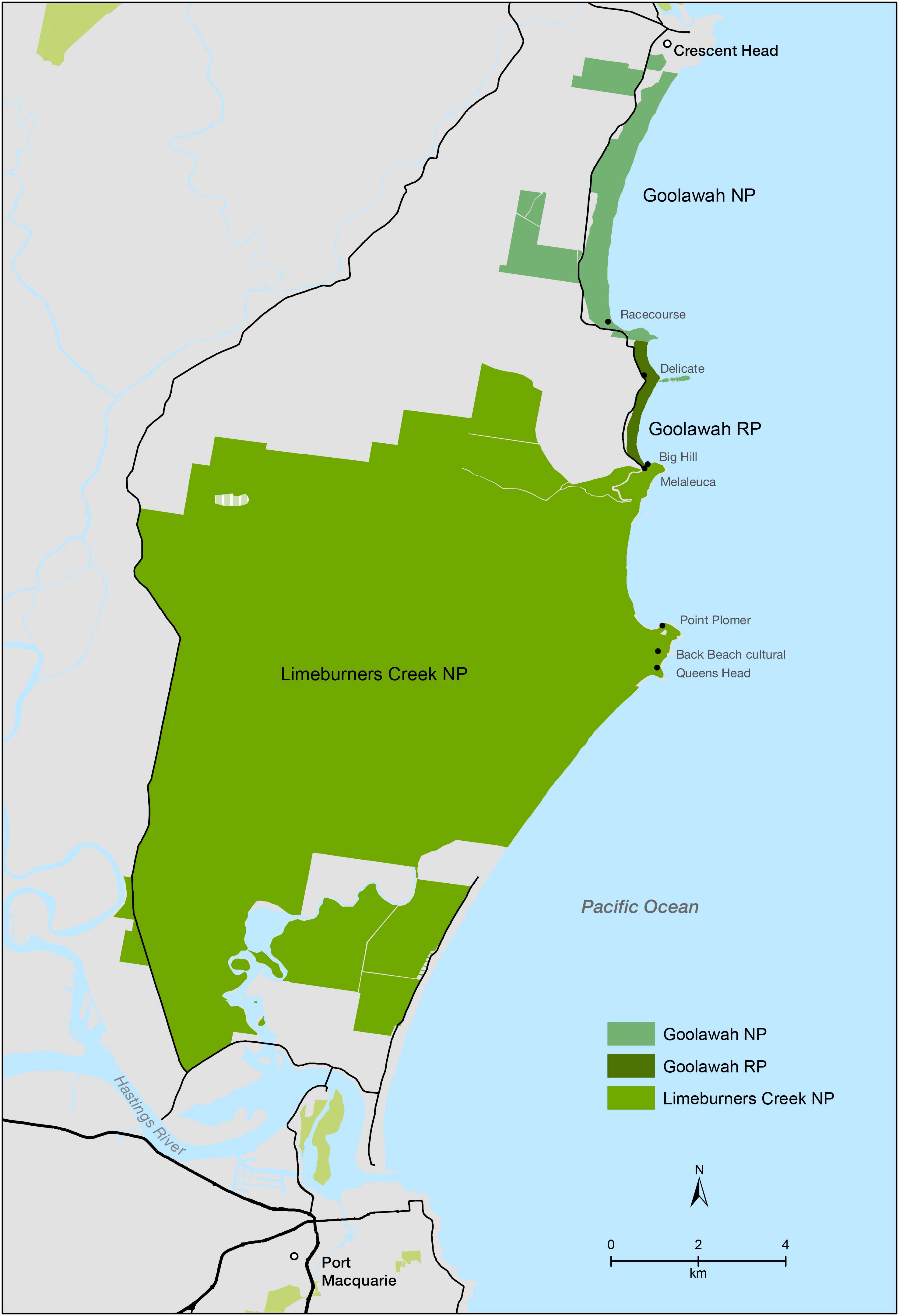
Limeburners Creek National Park, Goolawah National Park and Goolawah Regional Park engagement map Photo: DPIE
Rat Poisons Are Killing Our Wildlife: Alternatives
BirdLife Australia is currently running a campaign highlighting the devastation being caused by poison to our wildlife. Rodentcides are an acknowledged but under-researched source of threat to many Aussie birds. If you missed BirdLife's rodenticide talk but would like to know more, share data and comment on the use of rodenticides in Australia please visit: https://www.actforbirds.org/ratpoison
Owls, kites and other birds of prey are dying from eating rats and mice that have ingested Second Generation rodent poisons. These household products – including Talon, Fast Action RatSak and The Big Cheese Fast Action brand rat and mice bait – have been banned from general public sale in the US, Canada and EU, but are available from supermarkets throughout Australia.
Australia is reviewing the use of these dangerous chemicals right now and you can make a submission to help get them off supermarket shelves and make sure only licenced operators can use them.
There are alternatives for household rodent control – find out more about the impacts of rat poison on our birds of prey and what you can do at the link above and by reading the information below.
Let’s get rat poison out of bird food chains.
The Australian Pesticides and Veterinary Medicines Authority (APVMA) – is currently asking Australians for their views on how rodent poisons are regulated.
Have your say by making a submission here.
Powerful Owl at Clareville - photo by Paul Wheeler
Pesticides that are designed to control pests such as mice and rats cane also kill our wildlife through either primary or secondary poisoning. Insecticides include pesticides (substances used to kill insects), rodenticides (substances used to kill rodents, such as rat poison), molluscicides (substances used to kill molluscs, such as snail baits), and herbicides (substances used to kill weeds).
Primary poisoning occurs when an animal ingests a pesticide directly – for example, a brushtail possum or antechinus eating rat bait. Secondary poisoning occurs when an animal eats another animal that has itself ingested a pesticide – for example, a greater sooty owl eating a rate that has been poisoned or an antechinus that had eaten rat bait.
Rodenticides are the most common and harmful pesticides to Australian wildlife. Though no comprehensive monitoring of non-target exposure of rodenticides has been conducted, numerous studies have documented the harm rodenticides do to native animals. In 2018, an Australian study found that anticoagulant rodenticides in particular are implicated in non-target wildlife poisoning in Australia, and warned Australia’s usage patterns and lax regulations “may increase the risk of non-target poisoning”.
Most rodenticides work by disrupting the normal coagulation (blood clotting) process, and are classified as either “first generation” / “multiple dose” or “second generation” / “single dose”, depending on how many doses are required for the poison to be lethal.
These anticoagulant rodenticides cause victims of anticoagulant rodenticides to suffer greatly before dying, as they work by inhibiting Vitamin K in the body, therefore disrupting the normal coagulation process. This results in poisoned animals suffering from uncontrolled bleeding or haemorrhaging, either spontaneously or from cuts or scratches. In the case of internally haemorrhaging, which is difficult to spot, the only sign of poisoning is that the animal is weak, or (occasionally) bleeding from the nose or mouth. Affected wildlife are also more likely to crash into structures and vehicles, and be killed by predators.
An animal has to eat a first generation rodenticide (e.g. warfarin, pindone, chlorophaninone, diphacinone) more than once in order to obtain a lethal dose. For this reason, second generation rodenticides (e.g. difenacoum, brodifacoum, bromadiolone and difethialone) are the most commonly used rodenticides. Second generation rodenticides only require a single dose to be consumed in order to be lethal, yet kill the animal slowly, meaning the animal keeps coming back. This results in the animal consuming many times more poison than a single lethal dose over the multiple days it takes them to die, during which time they are easy but lethal prey to predators. This is why second generation poisons tend to be much more acutely toxic to non-target wildlife, as they are much more likely to bioaccumulate and biomagnify, and clear very slowly from the body.
Species most at risk from poisons
Small Mammals
Small mammals including possums and bandicoots often consume poisons such as snail bait, or rat bait that has been laid out to attract and kill rats, mice, and rabbits. Poisons such as pindone are often added to oats or carrots, and lead to a slow, painful death of internal bleeding. Australian possums often consume rat bait such as warfarin, which causes extensive internal bleeding, usually resulting in death.
There is a very poor chance of survival. Possums are also known to consume slug bait, which results in a prolonged painful death mainly from neurological effects. There is no treatment.
Small mammals can also be poisoned by insecticides. Possums, for example, can ingest these poisons when consuming fruit from a tree that has been sprayed with insecticide. Rescued by a WIRES carer, the brushtail possum joey pictured below was suffering from suspected insecticide poisoning. Though coughing up blood, luckily the joey did not ingest a lethal dose as he survived in care and was later released.
Large Mammals
Despite their size, large mammals including wallabies, kangaroos and wombats can also fall victim to pesticide poisoning. Wallabies and kangaroos have been known to suffer from rodenticide poisoning, while poisons often ingested by wombats include rat bait from farm sheds, and sodium fluroacetate (1080) laid out to kill pests such as cats and foxes.
Australian mammals are also impacted by the use of insecticides. DDT, although a banned substance, has been reported as killing marsupials.
Birds
Birds have a high metabolic rate and therefore succumb quickly to poisons. Australian birds of prey – owls (such as the southern boobook) and diurnal raptors (such as kestrels) – can be killed by internal bleeding when they eat rodents that have ingested rat bait. A 2018 Western Australian study determined that 73% of southern boobook owls found dead or were found to have anticoagulant rodenticides in their systems, and that raptors with larger home ranges and more mammal-based diets may be at a greater risk of anticoagulant rodenticide exposure.
Insectivorous birds will often eat insects sprayed with insecticides, and a few different species of birds may be affected at the same time. Unfortunately little can be done and death most often results.
Organophosphates are the most widely used insecticide in Australia. Birds are very susceptible to organophosphates, which are nerve toxins that damage the nervous system, with poisoning occurring through the skin, inhalation, and ingestion. Organophosphates can cause secondary poisoning in wild birds which ingest sprayed insects. Often various species of insectivorous birds are affected at the same time as they come down to eat the dying insects. After a bird is poisoned, death usually occurs rapidly. Raptors have also been deliberately or inadvertently poisoned when organophosphates have been applied to a carcass to poison crows.
Organochlorine pesticides (OCPs) are persistent, bio-accumulative pesticides that include DDT, dieldrin, heptachlor and chlordane. OPC’s have been used extensively in the agriculture industry since the 1940s. Some of the more common product names include Hortico Dieldrin Dust, Shell Dieldrex and Yates Garden Dust. Although no OCP’s are currently registered for use in the home environment in Australia, many of these products still remain in use on farms, in business premises and households. OCP poisons remain highly toxic in the environment for many years impacting on humans, animals, birds and especially aquatic life. They can have serious short-term and long-term impacts at low concentrations. In addition, non-lethal effects such as immune system and reproductive damage of some of these pesticides may also be significant. Birds are particularly sensitive to these pesticides, and there have even been occasions where the deliberate poisoning of birds has occurred. Tawny frogmouths are most often poisoned with OCP’s. The poisons are stored in fat deposits and gradually increase over time. At times of food scarcity, or during any stressful period, such as breeding season or any changes to their environment, the fat stores are metabolised, and with it, the poison load in their blood streams reaches acute levels, causing death.
Although herbicides, or weed killers, are designed to kill plants, some are toxic to birds. Common herbicide glyphosate (Roundup) will cause severe eye irritation in birds if they come into contact with the spray. Herbicides also have the impact of removing food plants that birds, or their insect food supply, rely on. Birds can also readily fall victim to snail baits, either via primary or secondary poisoning.
Reptiles and Amphibians
As vertebrate species, reptiles and amphibians are also at risk of pesticides. Though less is known about the effects of pesticides on reptiles and amphibians, these animals have been known to fall victim to pesticide poisoning. Blue-tongue lizards, for example, often consume rat bait and die of internal bleeding. A 2018 Australian study also found that reptiles may be important vectors (transporters) of rodenticides in Australia.
How to keep pests away and keep wildlife safe
Remember, pesticides are formulated to be tasty and alluring to the target species, but other species find them enticing, too. It is safest for wildlife, pets and people for us to not use any pesticides, and prevent or deter the presence of pests practically, rather than attempt to eliminate them chemically.
Tips to prevent and deter wildlife deaths from poisoning:
- Deter rats and mice around your property by simply cleaning up; removing rubbish, keeping animal feed well contained and indoors, picking up fallen fruits and vegetation, and using chicken feeders removes potential food sources.
- Seal up holes and in your walls and roof to reduce the amount of rodent-friendly habitat in your house.
- Replace palms with native trees; palm trees are a favourite hideout for black rats, while native trees provide ideal habitat for native predators like owls and hawks which help to control rodent populations.
- Set traps with care in a safe, covered spot, away from the reach of children, pets and wildlife. Two of the most effective yet safe baits are peanut butter and pumpkin seeds.
- To control slugs, terracotta or ceramic plant pots can be placed upside down in the garden or aviary. Slugs and snails will seek the dark, damp area this creates, and can be collected daily. They can then be drowned in a jar of soapy water. You can also sink a jar or dish into the soil and fill it with beer. The slugs are attracted to the yeast in the beer, fall in and then drown.
If turning to pesticides as a last resort:
- Use only animal-safe slug baits.
- Place tamper-proof bait stations out of reach of wildlife.
- Avoid using loose whether pellets or poison grain, present the highest risk, the latter being particularly attractive to seed-eating birds and to many small mammal species.
- Read the label and use as instructed.
- Avoid products containing second generation products difenacoum, brodifacoum, bromadiolone and difethialone, which are long-lasting and much more likely to unintentionally poison wildlife via secondary poisoning.
- Cover individual fruits when spraying fruit trees with insecticides.
Poisons kill dogs too
Because of their poisonous nature, pesticides pose a risk to animals and people alike, including pets and children. Roaming pets like cats and dogs are most at risk of being poisoned, with one 2016 study at the Norwegian University of Life Sciences finding that one in five dogs had rat poison in its body, and a 2011 study by the Humane Society in the United States finding that 74% of their pet poisoning cases are due to second-generation anticoagulants such as rat baits.
It is best to avoid the use of all pesticides, or otherwise use them sparingly, carefully and only after researching each poison and its correct usage. Always supervise pets and children, keep poisons locked out of their reach, and be vigilant in public spaces where pesticides may have accumulated, e.g. poisons can accumulate in streams or puddles where herbicides have recently been sprayed.
If you suspect your pet has been poisoned, seek veterinary help immediately.
If you suspect your child or another adult has been poisoned, do not induce vomiting and call the NSW Poisons Information Centre on 13 11 26 for 24/7 medical advice, Australia-wide.
References
Lohr, M. T. & Davis, R. A. 2018, Anticoagulant rodenticide use, non-target impacts and regulation: A case study from Australia, Science of The Total Environment, vol. 634, pp. 1372-1384.
Lohr, M. T. 2018, Anticoagulant rodenticide exposure in an Australian predatory bird increases with proximity to developed habitat, Science of The Total Environment, Volume 643, pp.134-144.
Lohr, M. T. 2018, Anticoagulant Rodenticides: Implications for Wildlife Rehabilitation, conference paper, Australian Wildlife Rehabiliation Conference, awrc.org.au
Olerud, S., Pedersen, J. & Kull, E. P. 2009, Prevalence of superwarfarins in dogs – a survey of background levels in liver samples of autopsied dogs. Norwegian University of Life Sciences, Faculty of Veterinary Medicine and Life Sciences, Department of Sports and Family Animal Medicine, Section for Small Animal Diseases.
Healthy Wildlife, Healthy Lives, 2017, Rodenticides and Wildlife, healthywildlife.com.au
Society for the Preservation of Raptors Inc. 2019, Raptor Fact Sheet: Eliminate Rats and Mice, Not Wildlife!, raptor.org.au/factsheetpests.pdf
W.I.R.E.S. Poisons and baits don't just kill rats.
.jpg?timestamp=1590728675788)
Barking Owl (Ninox connivens connivens)- photo by Julie Edgley - this nocturnal animal will eat mice and so become a victim of poisons through them
Echidna Season
Echidna season has begun. As cooler days approach, our beautiful echidnas are more active during the days as they come out to forage for food and find a mate. This sadly results in a HIGH number of vehicle hits.
What to do if you find an Echidna on the road?
- Safely remove the Echidna off the road (providing its safe to do so).
- Call Sydney Wildlife or WIRES
- Search the surrounding area for a puggle (baby echidna). The impact from a vehicle incident can cause a puggle to roll long distances from mum, so please search for these babies, they can look like a pinky-grey clump of clay
What to do if you find an echidna in your yard?
- Leave the Echidna alone, remove the threat (usually a family pet) and let the Echidna move away in it's own time. It will move along when it doesn't feel threatened.
If you find an injured echidna or one in an undesirable location, please call Sydney Wildlife on 9413 4300 for advice.
www.sydneywildlife.org.au
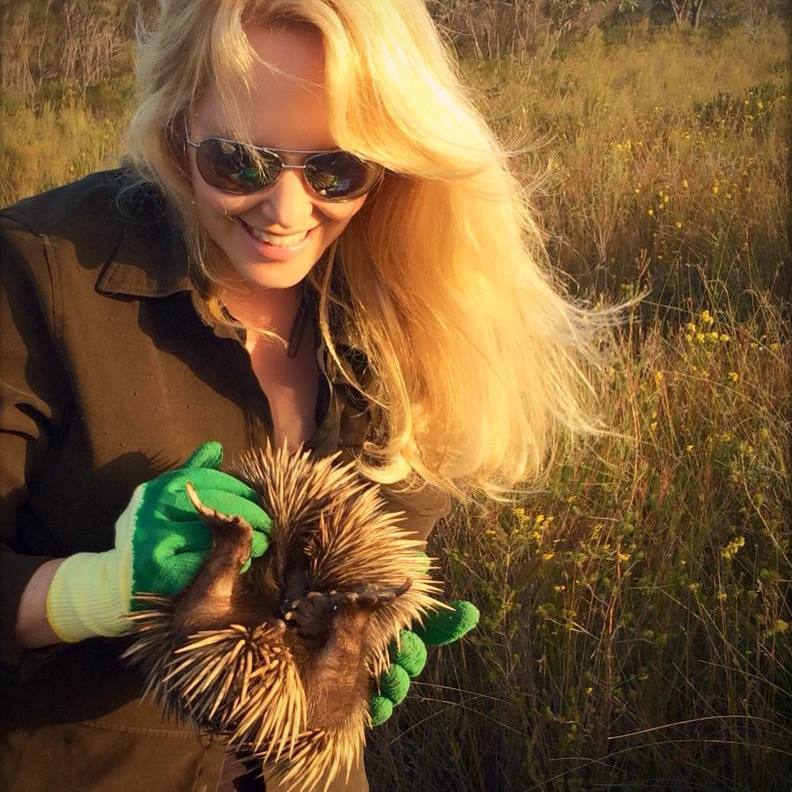
Lynleigh Greig, Sydney Wildlife, with a rescued echidna being returned to its home
 New Shorebird Identification Booklet
New Shorebird Identification Booklet
The Migratory Shorebird Program has just released the third edition of its hugely popular Shorebird Identification Booklet. The team has thoroughly revised and updated this pocket-sized companion for all shorebird counters and interested birders, with lots of useful information on our most common shorebirds, key identification features, sighting distribution maps and short articles on some of BirdLife’s shorebird activities.
The booklet can be downloaded here in PDF file format: http://www.birdlife.org.au/documents/Shorebird_ID_Booklet_V3.pdf
Paper copies can be ordered as well, see http://www.birdlife.org.au/projects/shorebirds-2020/counter-resources for details.
Download BirdLife Australia's children’s education kit to help them learn more about our wading birdlife
Shorebirds are a group of wading birds that can be found feeding on swamps, tidal mudflats, estuaries, beaches and open country. For many people, shorebirds are just those brown birds feeding a long way out on the mud but they are actually a remarkably diverse collection of birds including stilts, sandpipers, snipe, curlews, godwits, plovers and oystercatchers. Each species is superbly adapted to suit its preferred habitat. The Red-necked Stint is as small as a sparrow, with relatively short legs and bill that it pecks food from the surface of the mud with, whereas the Eastern Curlew is over two feet long with a exceptionally long legs and a massively curved beak that it thrusts deep down into the mud to pull out crabs, worms and other creatures hidden below the surface.
Some shorebirds are fairly drab in plumage, especially when they are visiting Australia in their non-breeding season, but when they migrate to their Arctic nesting grounds, they develop a vibrant flush of bright colours to attract a mate. We have 37 types of shorebirds that annually migrate to Australia on some of the most lengthy and arduous journeys in the animal kingdom, but there are also 18 shorebirds that call Australia home all year round.
What all our shorebirds have in common—be they large or small, seasoned traveller or homebody, brightly coloured or in muted tones—is that each species needs adequate safe areas where they can successfully feed and breed.
The National Shorebird Monitoring Program is managed and supported by BirdLife Australia.
This project is supported by Glenelg Hopkins Catchment Management Authority and Hunter Local Land Services through funding from the Australian Government’s National Landcare Program. Funding from Helen Macpherson Smith Trust and Port Phillip Bay Fund is acknowledged.
The National Shorebird Monitoring Program is made possible with the help of over 1,600 volunteers working in coastal and inland habitats all over Australia.
The National Shorebird Monitoring program (started as the Shorebirds 2020 project initiated to re-invigorate monitoring around Australia) is raising awareness of how incredible shorebirds are, and actively engaging the community to participate in gathering information needed to conserve shorebirds.
In the short term, the destruction of tidal ecosystems will need to be stopped, and our program is designed to strengthen the case for protecting these important habitats.
In the long term, there will be a need to mitigate against the likely effects of climate change on a species that travels across the entire range of latitudes where impacts are likely.
The identification and protection of critical areas for shorebirds will need to continue in order to guard against the potential threats associated with habitats in close proximity to nearly half the human population.
Here in Australia, the place where these birds grow up and spend most of their lives, continued monitoring is necessary to inform the best management practice to maintain shorebird populations.
BirdLife Australia believe that we can help secure a brighter future for these remarkable birds by educating stakeholders, gathering information on how and why shorebird populations are changing, and working to grow the community of people who care about shorebirds.
To find out more visit: http://www.birdlife.org.au/projects/shorebirds-2020/shorebirds-2020-program
Pittwater Reserves
Aussie Bread Tags Collection Points

'A wake-up call': why this student is suing the government over the financial risks of climate change

As the world warms, the value of “safe” investments might be at risk from inadequate climate change policies. This prospect is raised by a world-first climate change case, filed in the federal court last week.
Katta O’Donnell – a 23-year-old law student from Melbourne – is suing the Australian government for failing to disclose climate change risks to investors in Australia’s sovereign bonds.
Sovereign bonds involve loans of money from investors to governments for a set period at a fixed interest rate. They’re usually thought to be the safest form of investment. For example, many Australians are invested in sovereign bonds through their superannuation funds.
But as climate change presents major risks to our economy as well as the environment, O'Donnell’s claim is a wake-up call to the government that it can no longer bury its head in the sand when it comes to this vulnerability.

O'Donnell’s Arguments
O’Donnell argues Australia’s poor climate policies – ranked among the lowest in the industrialised world – put the economy at risk from climate change. She says climate-related risks should be properly disclosed in information documents to sovereign bond investors.
O'Donnell’s claim alleges that by failing to disclose this information, the federal government breaches its legal duty. It alleges the government has engaged in misleading and deceptive conduct, and government officials breached their duty of care and diligence.
This is a standard similar to that owed by Australian company directors. Analysis from leading barristers indicates that directors who fail to consider climate risks could be found liable for breaching their duty of care and diligence.
O'Donnell argues government officials providing information to investors in sovereign bonds should meet the same benchmark.
Climate Change As A Financial Risk
Under climate change, the world is already experiencing physical impacts, such as intense droughts and unprecedented bushfires. But we’re also experiencing “transition impacts” from steps countries take to prevent further warming, such as transitioning away from coal.
Combined, these impacts of climate change create financial risks. For example, by damaging property, assets and operations, or by reducing demand for fossil fuels with the risk coal mines and reserves become stranded assets.
This thinking is becoming mainstream among Australian economists. As the Australian Prudential Regulation Authority’s Geoff Summerhayes put it:
When a central bank, a prudential regulator and a conduct regulator, with barely a hipster beard or hemp shirt between them, start warning that climate change is a financial risk, it’s clear that position is now orthodox economic thinking.
Why Safe Investments Are Under Threat
Sovereign bonds are a long-term investment. Katta O’Donnell’s bonds, for example, will mature in 2050. These time-frames dovetail with scientific projections about when the world will see severe impacts and costs from climate change.
And climate change is likely to hit Australia particularly hard. We’ve seen the beginning of this in the summer’s ferocious bushfires, which cost the economy more than A$100 billion.
Read more: With costs approaching $100 billion, the fires are Australia's costliest natural disaster
Over time, climate risks may impact sovereign bonds and affect Australia’s financial position in a number of ways. For example, by impacting GDP when the productive capacity of the economy is reduced by severe fires or floods.
Frequent climate-related disasters could also hit foreign exchange rates, causing fluctuations of the Australian dollar, as well as putting Australia’s AAA credit rating at risk. These risks would reduce if the government took climate change more seriously.
Already, some investors are voting with their feet. Last November, Sweden’s central bank announced it had sold Western Australian and Queensland bonds, stating Australia is “not known for good climate work”.
Unprecedented, But Not Novel
O’Donnell’s case against the federal government is an unprecedented climate case, even if its arguments are not novel.
Australia has been a “hotspot” for climate litigation in recent years, but the O'Donnell case is the first to sue the Australian government in an Australian court.
Previous cases suing governments have often raised human rights, such as the high-profile Urgenda case in 2015 against the Dutch government – the first case in the world establishing governments owe their citizens a legal duty to prevent climate change.
The O'Donnell case is also unique in its focus on sovereign bonds. But cases alleging misleading climate-related disclosures are themselves not new.
In Australia, shareholders sued the Commonwealth Bank of Australia in 2017 for failing to disclose climate change-related risks in its 2016 annual report. The case was settled after the bank agreed to improve disclosures in subsequent reports.
Read more: Climate change is a financial risk, according to a lawsuit against the CBA
In another headline-making case, 23-year-old council worker Mark McVeigh is taking his superannuation fund, Retail Employees Superannuation Trust, to court seeking similar disclosures.
The O'Donnell case builds on this line of precedent, extending it to disclosures in bond information documents. As such, courts will likely take it seriously.
What Precedent Might It Set?
If the O'Donnell case is successful it could establish the need for disclosure of climate-related financial risks for a range of investments.
At a minimum, a ruling in O'Donnell’s favour may compel the Australian government to disclose climate-related risks in its information documents for investors. This might make people think twice about how they choose to invest their money, especially as investors seek to “green” their portfolios.
It could also give rise to litigation using the same legal theory in sovereign bond disclosure claims against other governments, much in the way that the Urgenda case has spawned copycat proceedings from Belgium to Canada.
Whether the case provides the impetus for further government action to improve the effectiveness of Australia’s climate policies remains to be seen.
Still, it’s clear climate-related financial risks have entered the corporate boardroom. With this case, they’ve now come knocking at the government’s door.![]()
Jacqueline Peel, Professor of Environmental and Climate Law, University of Melbourne and Rebekkah Markey-Towler, Research assistant, University of Melbourne
This article is republished from The Conversation under a Creative Commons license. Read the original article.
Perseverance: the Mars rover searching for ancient life, and the Aussie scientists who helped build it
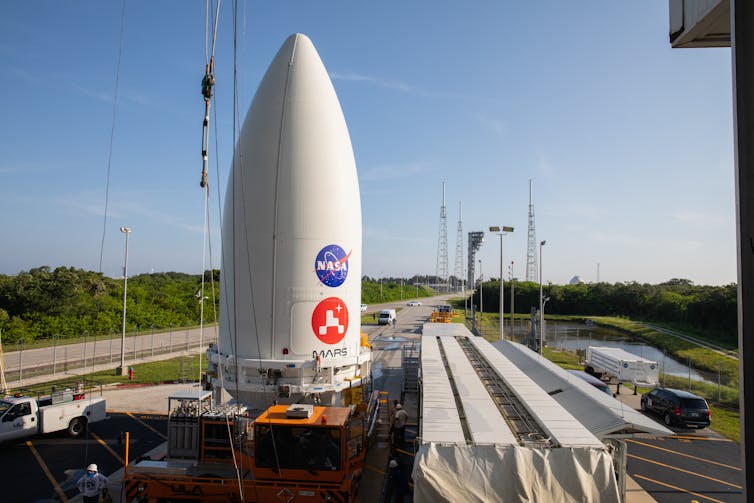
Every two years or so, when Mars passes close to Earth in its orbit around the Sun, conditions are right to launch a spacecraft to the red planet. Launches during this period can complete the seven-month voyage using a minimum of energy.
We are in the middle of one such period right now, and three separate missions are taking advantage of it. The United Arab Emirates’ Hope mission and China’s Tianwen-1 have already launched. NASA’s Perseverance mission is set to take flight tonight (on July 30, at 9:50pm AEST).
Between them, the missions will study the atmosphere and surface of Mars in unprecedented detail, collect samples that may one day come back to Earth, and tell scientists more about whether our neighbouring planet ever held life.
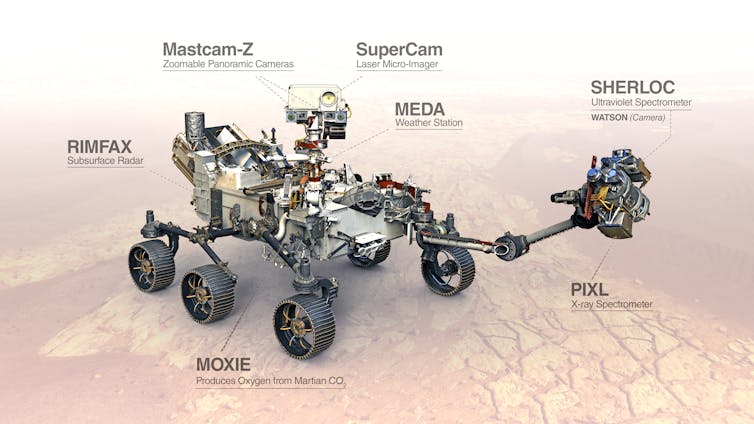
Read more: Our long fascination with the journey to Mars
What Do The Mars Missions Aim To Achieve?
The UAE’s Hope orbiter will study the atmosphere of Mars using infrared and ultraviolet light.
In a truly international effort, Hope’s instruments were developed by scientists at the Mohammed Bin Rashid Space Centre in Dubai, working with the University of Colorado, Boulder, and Arizona State University in the United States. Hope was carried from Dubai to Japan by a Russian-operated Antonov aircraft, and launched from Tanegashima Island on July 19.
Hope has no doubt already achieved its primary goal of inspiring the youth of the Arab world. Like most deep space missions, Hope’s goals are a combination of cutting-edge science, technology demonstration, and stimulating the local knowledge economy.
Although accompanied by less fanfare, China’s Tianwen-1 mission is also an extraordinarily ambitious effort driven by clear scientific goals. Building on the success of China’s lunar exploration program, Tianwen is the country’s first attempt at a Mars rover. If Tianwen succeeds, the China National Space Administration (CNSA) will become the second space agency after NASA to operate a rover on Mars.
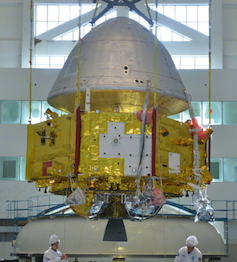
Both the rover and accompanying orbiter will bring instruments that address key questions of the global scientific community.
Tianwen will carry a ground-penetrating radar that will let geologists peer beneath the dusty surface to examine the rock beneath the landing site. It will also carry the first mobile instrument that can sense variations in the magnetic field, which may tell scientists a lot about how fit for life Mars was in the past.
Tianwen-1 launched on July 23 from Hainan Island. Unfortunately, mission scientists were forbidden from talking to media beforehand, and live videos of the launch were banned (though some snuck out online).
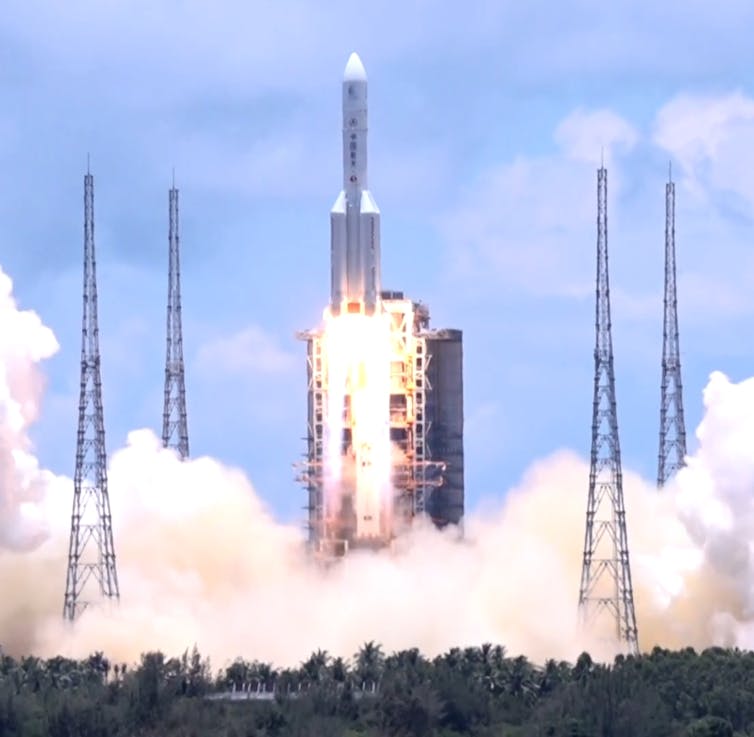
China has now demonstrated a super heavy launch system to deep space, and if it succeeds with a soft landing on Mars and deep space operations, it will be close on NASA’s heels in Mars sample return. The idea of a Chinese Mars mission getting the first answers to big questions in planetary science, which would have seemed unlikely only a few years ago, may well become reality in the coming months. Both the Chinese and American programs have plans to return Martian samples to Earth in the 2030s.
Perseverance And The Search For Ancient Life
For now, NASA is still the player with the most experience and the best resources. The Perseverance rover, scheduled for launch from Florida on July 30 at 9:50pm AEST, will be the most complex object ever sent to Mars. The new rover will search for evidence of ancient microbial life in Jezero Crater.
Read more: Ancient life in Greenland and the search for life on Mars
Perseverance is the first in a series of missions that NASA hopes will culminate in bringing samples of the Martian surface back to Earth. A novel system will collect samples selected by a globally distributed team of experts and cache them for future collection. These rocks will likely be studied for decades, like the samples of Moon rock brought home by the Apollo missions.
Italy, Norway and Denmark are among the smaller nations contributing hardware to Perseverance. The scientists and engineers who participate gain experience with deep space systems, share in discoveries and increase the overall scientific gains of the project.
How Australians Are Involved
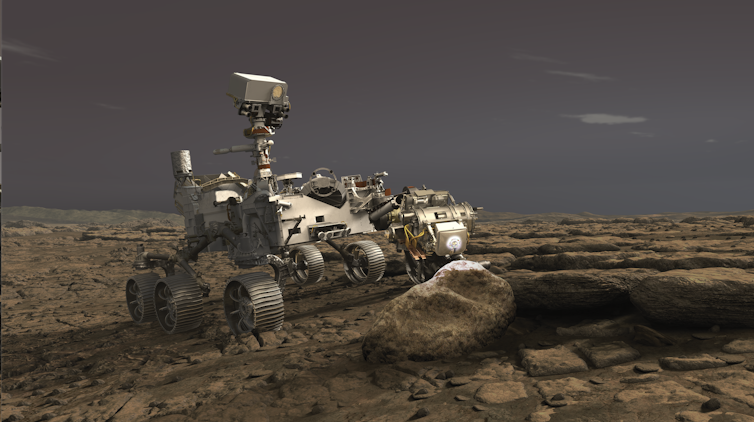
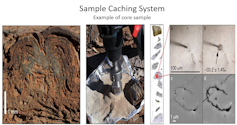
Several Australians are also involved in the Perseverance mission.
Brisbane-born geologist Abigail Allwood, based at NASA Jet Propulsion Laboratory (JPL) in California, leads the team who developed an instrument on the rover’s arm capable of detecting signs of past life. Australian planetary scientist Adrian Brown is also working on the mission, bringing his experience using remote sensing to study Australian rocks that resemble those on Mars.
I worked on this mission at NASA JPL for several years and, although I have returned to Australia, I continue to serve as a long-term planner leading the mission’s science team and as an instrument co-investigator. The Queensland University of Technology is contributing software that will analyse data returned from the rover, with opportunities for Australian students and academics to contribute to the science investigation.
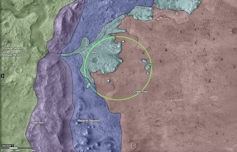
The Future
Australia is well placed to make important contributions to the future of Mars exploration. But to do so we must collaborate across national borders and find our place in the international scientific framework.
The planning of the nascent Australian Space Agency has largely focused on creating jobs and nurturing industry, but it needs a list of scientific priorities to guide investment in space missions. Otherwise, we risk building a car that is missing the driver’s seat.
At successful space agencies overseas, engineers and private industry work with scientists who conceive and operate spacecraft in pursuit of truth. Employment and innovation come from scientific projects, not the other way around. By following this model, Australia too may join the exploration of the universe, spurring technological innovation and inspiring the next generation of humans in the process.
Read more: Why isn't Australia in deep space? ![]()
David Flannery, Planetary Scientist, Queensland University of Technology
This article is republished from The Conversation under a Creative Commons license. Read the original article.
10 things we do that puzzle and scare horses
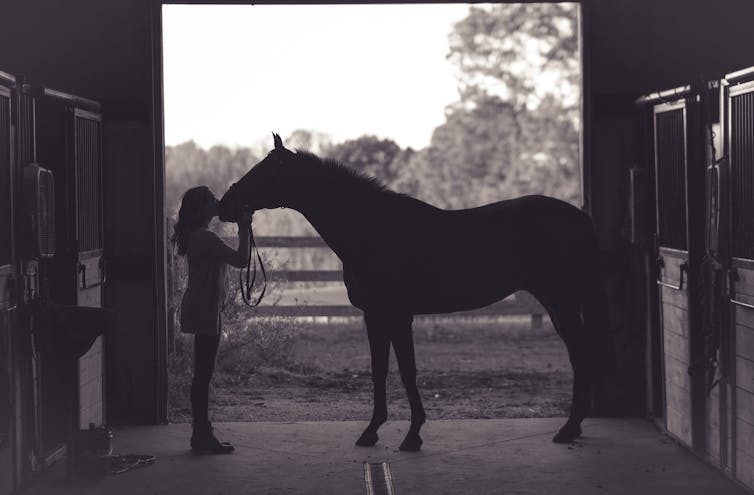
Horses, like our dogs and cats, are familiar to many of us, be they racehorses, police horses, or much-loved pony club mounts. So it might surprise you that horses, in Australia, are more deadly than snakes, and indeed all venomous animals combined.
An equine veterinarian is more at risk of workplace injury than a firefighter. Does horses’ apparent familiarity lead us to misinterpret or misunderstand their behaviour?
Read more: 8 things we do that really confuse our dogs
Some of our interactions with horses correspond to interactions between horses themselves. Giving our horse a scratch on an itchy spot or allowing them to rub their head against us, while frowned on by some trainers, mimics how horses behave together.
But there are many other interactions which, from the horse’s perspective, are unusual or downright rude.
The culture clash between horses and humans can trigger defence or flight responses that can leave us badly injured. Here are ten common challenges we present to horses:
1. Invasive veterinary care
There are many veterinary practices we impose on horses to keep them healthy. Some of them, such as injecting or suturing, are invasive or painful. Horses’ natural reaction to pain is to flee. If they can’t, they may resort to aggression, such as biting or kicking.
Horses don’t know veterinary treatments are meant to help them, and hence vets who treat horses are at more risk of injury than those treating other species. Equine vets sustain more workplace injuries than construction workers or firefighters.
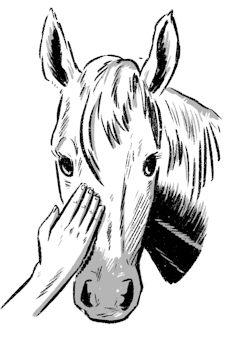
2. Patting them
Many horse people routinely pat their horses as a reward for a job well done. But horses have not evolved to find this rewarding. They don’t pat each other – instead, they scratch or gently nibble each other as a form of bonding.
A recent study showed patting increased horses’ heart rates, whereas scratching lowered them and was associated with behavioural signs of relaxation and enjoyment.
3. Picking up feet, hoof trimming and shoeing
An important task in horse-keeping is hoof care through regular cleaning, trimming or shoeing. This requires us to pick up a horse’s foot and hold it aloft for several minutes. This practice of immobilising the hoof restricts the horse’s ability to flee if it perceives a threat, which may be why many horses find hoof-handling stressful. Training a horse to accept having its feet and legs held requires patience to prevent injury to both the horse and the handler.
Read more: Dressing up for Melbourne Cup Day, from a racehorse point of view
4. Grooming sensitive areas
Horses in groups regularly groom each other, favouring areas that aren’t sensitive or ticklish. We like to groom our horses all over. Grooming the sensitive groin, inguinal and perineal regions is likely to be unpleasant for horses. This may account for the tail-swishing, agitation and even biting of the handler often seen when people groom these taboo areas.
5. Pulling or clipping hairs and whiskers
Many horse owners like to impose strict order on their horses’ body hair, including pulling out “excess” hair from the mane and tail, and trimming or removing body hair, facial whiskers and the protective hair inside the ears. These activities are frequently resented by horses. Some European countries have banned whisker trimming altogether because of the importance of whiskers to horses in detecting the proximity of surfaces and foraging outside their field of view.
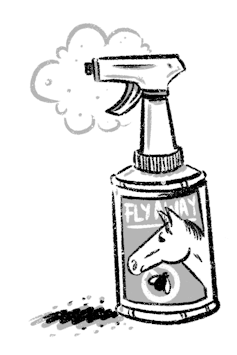
6. Spraying them with chemicals such as flyspray
Spraying fly repellent is common enough for many humans. But it creates a strange noise and may also be perceived as aversive when it lands on sensitive skin. The strong scent of the chemicals can also be aversive to horses, given their highly sensitive sense of smell. Patient training is often needed to counter-condition horses so they stand quietly while being sprayed.
7. Feeding by hand or from a bucket
As grazers, horses do not feed each other (except when nursing foals) and in free-roaming situations, aggression over food is rare. In contrast, food aggression is often seen in domestic horses. We provide highly palatable foods and treats that can bring out unwelcome behaviours because horses are highly motivated to eat these foods.
Some learn to mug their carers, for example by knocking the feed bucket out of their hands. In such a situation, crime really does pay and the horse can swiftly learn to repeat the behaviour. Of course, the horse’s confusion increases and its welfare plummets if it is punished for this.

8. Putting them in a trailer or horse box
Horses are claustrophobic and have 320° vision, so our practice of loading them into dark, narrow spaces with unstable footing, such as into trailers (floats) and horse boxes, is often a challenge for a species that has evolved to avoid such spaces. Difficulties with loading and with dangerous behaviours during transport are routinely reported. These responses are generally manifestations of panic and include rushing off the trailer and pulling back when tied up.
9. Branding
Searing a permanent mark onto the skin of horses is often required for identification purposes. The use of super-cooled brands or firebrands is unpleasant because they cause a third-degree burn and require the horse to be restrained, either in stocks or via chemical sedation. Thankfully, less invasive methods of identification, such as microchipping, are gaining increasing acceptance among breed and competition societies.
10. Stabling and other forms of isolation
Putting horses in stables might seem benign, and many horses voluntarily enter stables because that is where they are fed. But stabling prevents horses from engaging in most of their grazing and social behaviours. Horses rarely voluntarily isolate themselves from other horses, and prolonged social isolation can lead to behavioural problems such as separation distress, rug-chewing and stereotyped behaviours such as weaving and stall-walking.
Read more: Is your horse normal? Now there’s an app for that
If you’d like to benchmark your horse or pony against thousands of others that we have gathered data on, consider using the Equine Behavior Assessment Research Questionnaire. Understanding why horses find so many procedures unpleasant, frightening or painful is the first step to cutting them some much-needed slack.
They do not defend themselves out of malice but from fear. Taking a walk in their hooves allows us to make them happier and safer to be around.![]()
Paul McGreevy, Professor of Animal Behaviour and Animal Welfare Science, University of Sydney and Cathrynne Henshall, PhD Candidate, School of Animal and Veterinary Sciences, Charles Sturt University
This article is republished from The Conversation under a Creative Commons license. Read the original article.
We are what we steal: the New South Wales Police Gazette and charting histories of crime
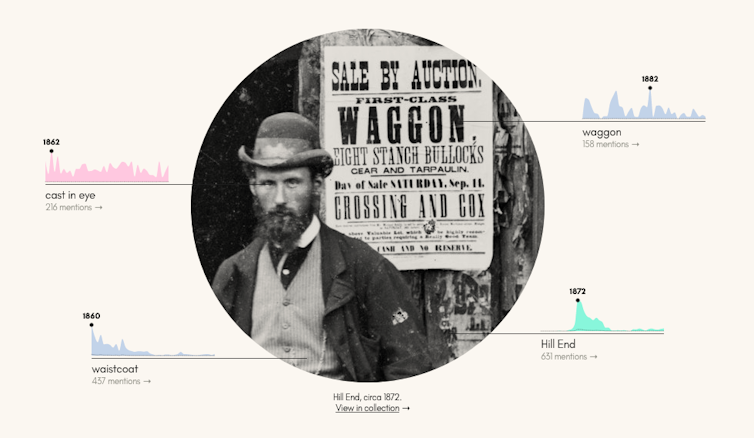
In January 1788, a small floating society — eleven ships carrying crew, crooks, some military men and a few passengers — sailed into the body of water the colonisers called Port Jackson.
In the long term, there were ambitious plans for this new outpost of the British Empire. In the short term, this colony of thieves was all about crime and crime control; the details of which, from the mid-1800s, were published in what came to be known as the Police Gazette.
This fascinating record is the subject of a new online experience hosted by the State Library of New South Wales.
Sydney-based data visualisation designer and developer Brett Tweedie, has produced an extraordinary new data visualisation of almost 20 million words published in the Police Gazette from 1860 until 1900.
This new project, We Are What We Steal, was undertaken as a Digital Drop-In (a kind of small-scale Fellowship) at the State Library of New South Wales’ innovation unit, the DX Lab.
As this work shows, our desire for the details of crimes is nothing new. We see in the Police Gazette, and we see more clearly through Tweedie’s visualisations, the types of crime details that were important to capture in colonial New South Wales.
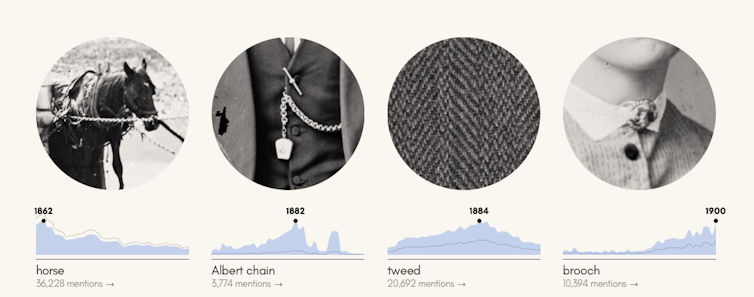
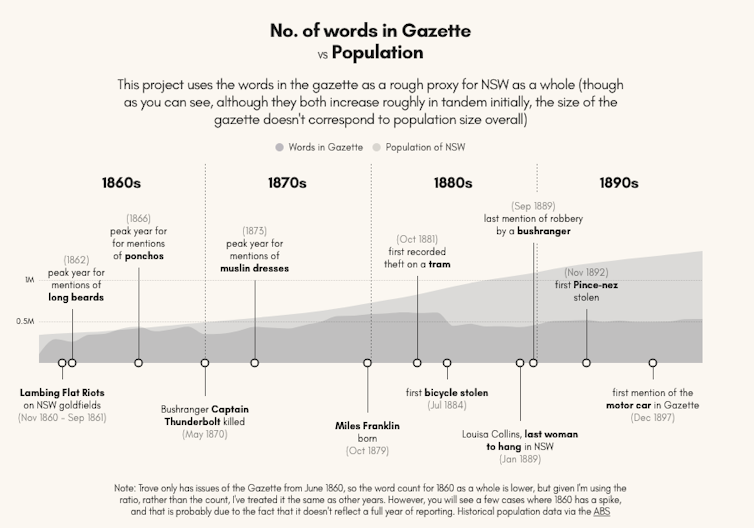
Early Efforts To Police The Colony
Australia’s first civilian police force, the Night Watch, was formed by Governor Arthur Phillip in 1789. This unit was made up of the 12 best-behaved convicts, who had been selected to assist in the keeping of law and order in Sydney Town.
It was not ideal to have convicts monitoring other convicts, but the marines stationed in the new colony were few. The military would supervise prisoners for certain purposes or tasks, but the work associated with constables and gaolers would have to be undertaken by others.
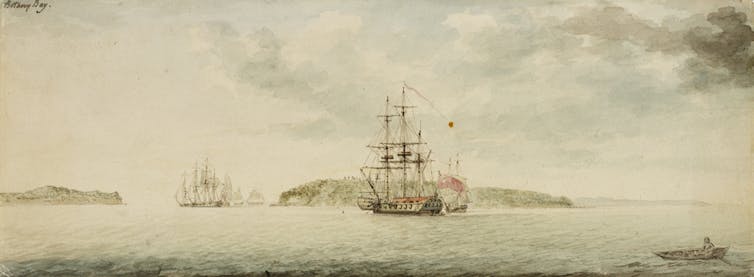
In 1796, the constables were reorganised by Governor John Hunter and divided into regions. Another reorganisation, ordered by Governor Lachlan Macquarie in 1810, resulted in a more formal, though still problematic, system of policing. The convict-as-constable model continued to reveal cracks in the system. Another effort to improve law enforcement was the Sydney Police Act 1833 (NSW) which was designed to regulate
the Police in the Town and Port of Sydney and for removing and preventing Nuisances and Obstructions therein.

Crime, of course, extended beyond the boundaries of Sydney. Containing lawbreakers in metropolitan and in regional and remote areas, was an ongoing issue for colonial authorities as the early crimes of insolence and petty thefts were placed into scale by more serious offences such as bushranging and murder.
One response to increases in crime was to establish specific types of police. There were various services across the colony, including the Row Boat Guard, the Border Police, the Mounted Police and the Gold Escort.
The Police Regulation Act 1862 (NSW) radically changed policing by amalgamating all the colonial police forces to establish the New South Wales Police Force.
Read more: Enforcing assimilation, dismantling Aboriginal families: a history of police violence in Australia
The New South Wales Police Gazette
One of the most important tools of policing in colonial-era New South Wales was the Police Gazette. First published in 1854, as Reports of Crime, it was distributed to police stations across the colony.

These reports contained
details of crimes committed, persons to be apprehended, descriptions of stolen property and rewards offered, lists of regimental and ships deserters, and other police notices concerning recovery of property, apprehension of suspects previously sought, and dismissals of police officers for unsatisfactory conduct.
Published from 1862 as the New South Wales Police Gazette and Weekly Record of Crime, this vital tool for crime control became the Police Gazette in 1974 and appeared until 1982 (you can read issues of the Police Gazette, up to 1930, on Trove).
We Are What We Steal
In We Are What We Steal, Tweedie has concentrated on people, places and things.
In this data visualisation, the men who captured details through the Police Gazette reveal themselves not just as constables on the lookout for criminals, but as storytellers.
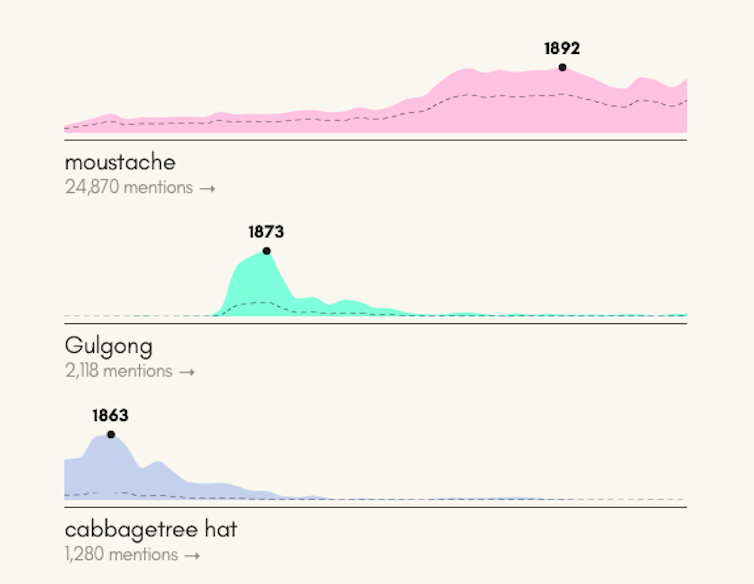
Favourite crime fiction authors and popular true crime writers often use stereotypes to serve as shorthand for their readers. Police officers also routinely relied on creating and using stereotypes to tell crime stories to each other.
Yet, stereotypes have severe consequences in the real world. In the case of the Police Gazette, a publication designed to make society safer could also make society more unequal through reinforcing common prejudices.
Crime is timeless and universal, but the contexts for crime are fluid. As Tweedie writes, we can see numerous stories in the Police Gazette, including:
Changing fashions, new technologies, new modes of transport, the establishment of new towns, increasing wealth, all this is recorded in the gazette — along with the racism of the day — as a by-product of reporting the crimes (and other police matters) that occurred.
Tweedie prompts us to interrogate crime by focusing on a single element of criminal acts. From age to gender and through to the drunken state of offenders. In a colony known for thieving, we can also look at what was stolen, from jewellery to clothing and, as times changed, bicycles.
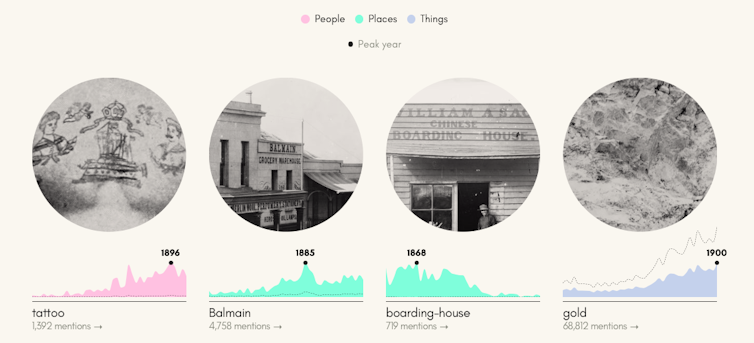
The history of policing reflects the values of a society and what, and who, is being protected.
Similarly, the stories of the men and women known to police in 19th-century New South Wales tell us, not just about crime, but about every aspect of society: who held power, who was vulnerable and how people lived.
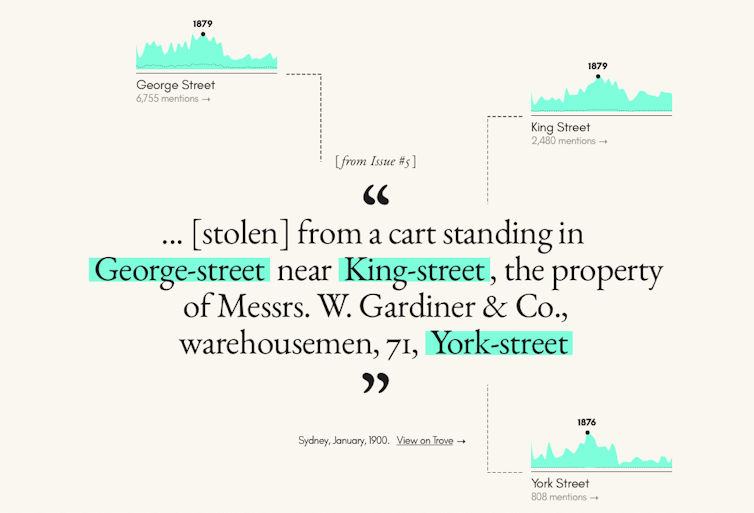
Rachel Franks, Conjoint Fellow, School of Humanities and Social Science, University of Newcastle
This article is republished from The Conversation under a Creative Commons license. Read the original article.
Book Of The Month August 2020: Life Of Charles Dickens
by Mackenzie, R. Shelton (Robert Shelton), 1809-1880; Dickens, Charles, 1812-1870
Publication date 1870
Stay Healthy During The HSC
In any ‘normal’ year the HSC requires dedication and focus as well as the support of friends and family.
This year hasn’t exactly panned out to be a ‘normal’ year, with announcements about changes to the HSC due to COVID-19.
Despite all the goings-on, students across NSW are continuing to study for their HSC with focus and determination, and we at NESA are here to help.
This year we are partnering with mental health organisation ReachOut to deliver news, information, guidance and advice to support all HSC students.
You’ll hear from experts, teachers, parents and other students as well as some inspiring spokespeople. This year we are planning to lighten your mental load with practical tips and tricks for staying active, connected and in charge of your wellbeing.
ReachOut’s Study Hub has heaps of info about taking a proactive approach to your mental health or where to go if you need more support. ReachOut’s Forums are great for sharing what’s going on for you and get ideas about the best ways to feel happy and well.
So follow and use #StayHealthyHSC for regular health and wellbeing updates and information.
View our range of social media images, posters and flyer to help you get involved and share the Stay Healthy HSC message with your community.

Honouring Our World War Two Veterans

Vale Dr Harry Nespolon
Statement From The Honourable Tony Pagone QC Relating To The COVID-19 Outbreak In Aged Care Facilities
Hearing To Examine Evolving Impact Of COVID-19 On Aged Care
- the role and responsibilities of State, Territory and Federal governments in responding to such crises in aged care services
- what should be done and by whom in the future to support the aged care sector to respond to pandemics, infectious disease outbreaks or other emergencies
- the balance between managing risks posed by a future pandemic or infectious disease outbreak and maintaining the overall health and wellbeing of aged care recipients including their mental health and quality of life
- the measures taken by the health and aged care sectors to respond to the pandemic including transporting infected residents to hospital
- the impact of those measures on older Australians receiving aged care services, their families and their carers
- challenges faced by the aged care sector including those relating to management, workforce and access to personal protective equipment
- any other related matters.
Simplified Income Reporting Coming In December 2020
- ABSTUDY
- Age Pension
- Austudy
- Carer Payment
- Disability Support Pension
- Farm Household Allowance
- Jobseeker Payment
- Partner Allowance
- Parenting Payment (single and partnered)
- Special Benefit
- Status Resolution Support Services
- Widow Allowance
- Youth Allowance.
Naturally Occurring Lithium In Drinking Water Linked With Lower Suicide Rates
- Lifeline on 13 11 14
- Kids Helpline on 1800 551 800
- MensLine Australia on 1300 789 978
- Suicide Call Back Service on 1300 659 467
- Beyond Blue on 1300 224 636
- Headspace on 1800 650 890
- ReachOut at au.reachout.com
- Care Leavers Australasia Network (CLAN) on 1800 008 774
Deep Sea Microbes Dormant For 100 Million Years Are Hungry And Ready To Multiply
Plato Was Right: Earth Is Made Of Cubes
Science Sweetens Australian Stingless Bee Species Honey Health Claims
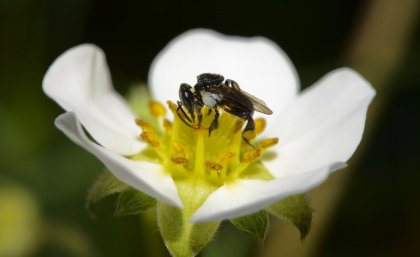
How Renegade Protein Interrupts Brain Cell Function In Alzheimer's Disease
Gene Variations At Birth Reveal Origins Of Inflammation And Immune Disease
Disclaimer: These articles are not intended to provide medical advice, diagnosis or treatment. Views expressed here do not necessarily reflect those of Pittwater Online News or its staff.